Best dehumidifiers - 9 models, tested to tackle moisture, mould, and musty smells
Alongside a team of experts, I've tested the best dehumidifiers for keeping your home dry and healthy

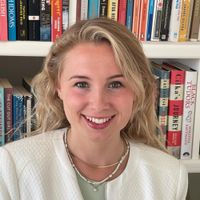
The best dehumidifiers can make battling damp, mould, and condensation a breeze. I’ve tested every model from Meaco to ProBreeze to find the most effective machines that won’t send your energy bills soaring. From mildewy bathrooms to humid laundry rooms and dripping basements, I’ve put each one through its paces.
When I first bought a dehumidifier, I didn’t know my refrigerant from my desiccant (it’s a common mistake people make with their dehumidifiers). If you're in the same boat, here’s the difference: refrigerant dehumidifiers use condensation to draw moisture from the air (best for high-humidity rooms), while desiccant ones absorb moisture (ideal for fast results in colder spaces). These days, after regular use of my MeacoDry Arete Two, I’ve become a bit of a dehumidifier geek — and proud of it.
And I’m not one to gatekeep. I’ve gathered everything I’ve learned, from savvy reasons to buy a dehumidifier in the spring and summer, as well as what I wish I’d known before I bought my first one. Most importantly, I’ve written in-depth reviews of every dehumidifier worth your time and money. Whether you're after a whisper-quiet model for your bedroom or an industrial unit for a draughty old home, these are the ones that passed my tests—and the ones you can trust.
The quick list
I've tested over 15 dehumidifiers and narrowed them down to this list of nine. If you want the headlines, here are my favourite models. I'll go into more detail further down the page – including my best budget option.

The best dehumidifier overall
I used to face a constant battle against condensation in my two bed flat, especially when I was drying clothes or showering. Since bringing this home, I've not seen a single drop, even when I've had a long, hot shower. It's incredible.

The best dehumidifier for bedrooms
There's fierce competition to sit in this spot, but the De'Longhi claims it effortlessly. It's so quiet, I wasn't even sure it was working the first time I tried it overnight. Trust me, it was.
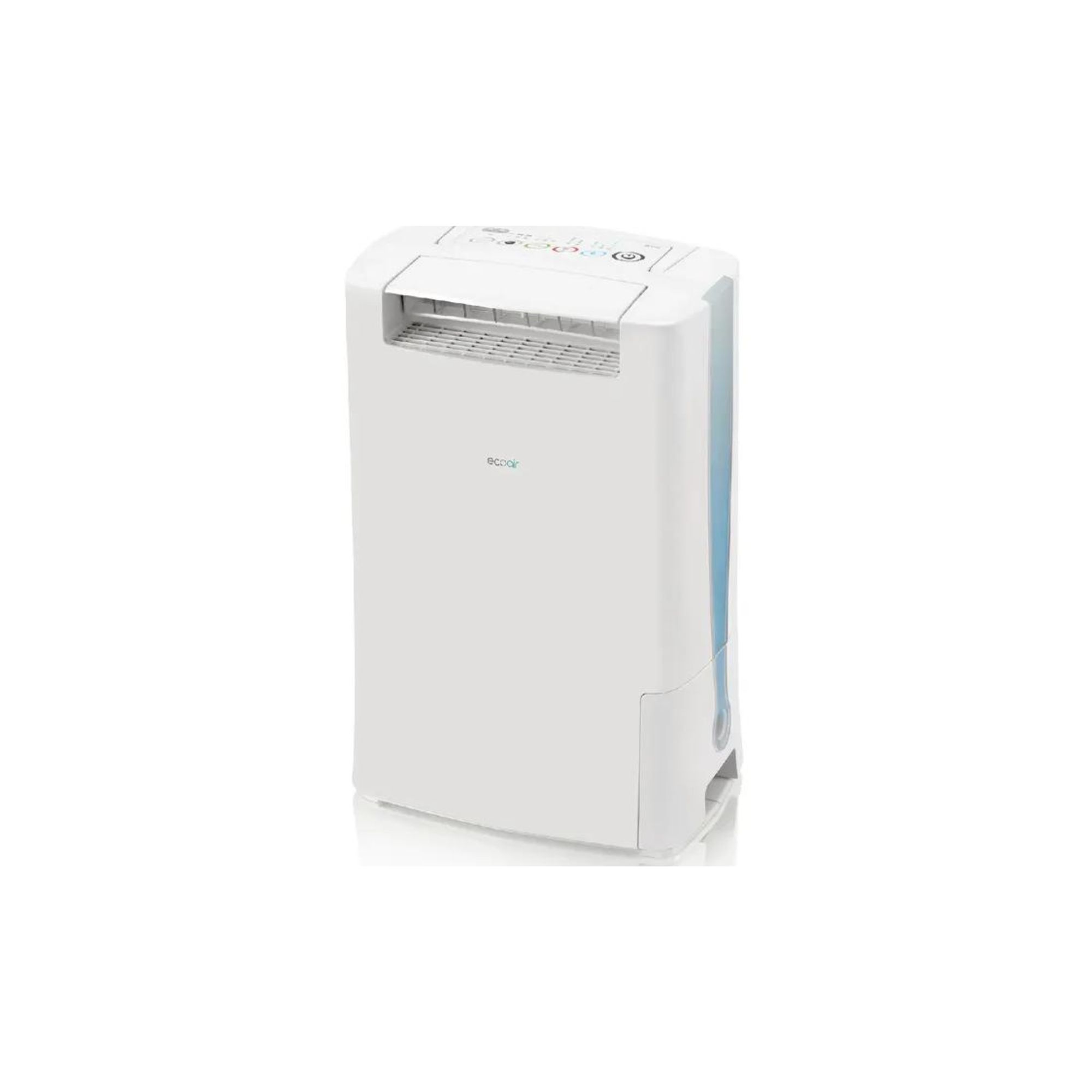
The best for drying laundry
A laundry room is the perfect place for a dehumidifier, especially if you want to dry clothes quickly. This had a whole large load cupboard dry in a matter of hours.
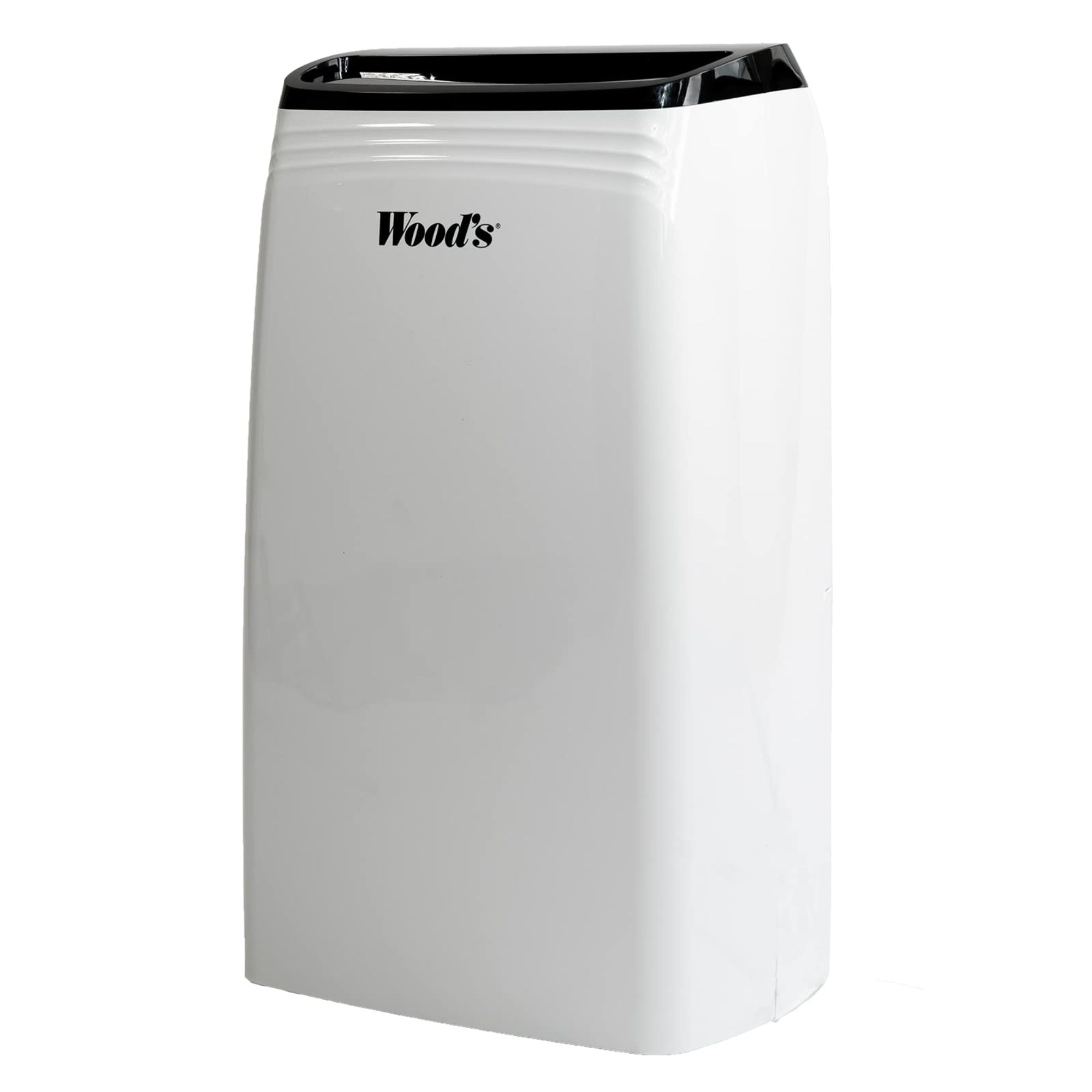
The best dehumidifier for bathrooms
This is exceptionally high quality, super reliable, and it works really well in cold, humid environments (probably because the brand is Scandinavian). Lots of models claim to be the best dehumidifier for bathrooms, but this is the one I'd choose.
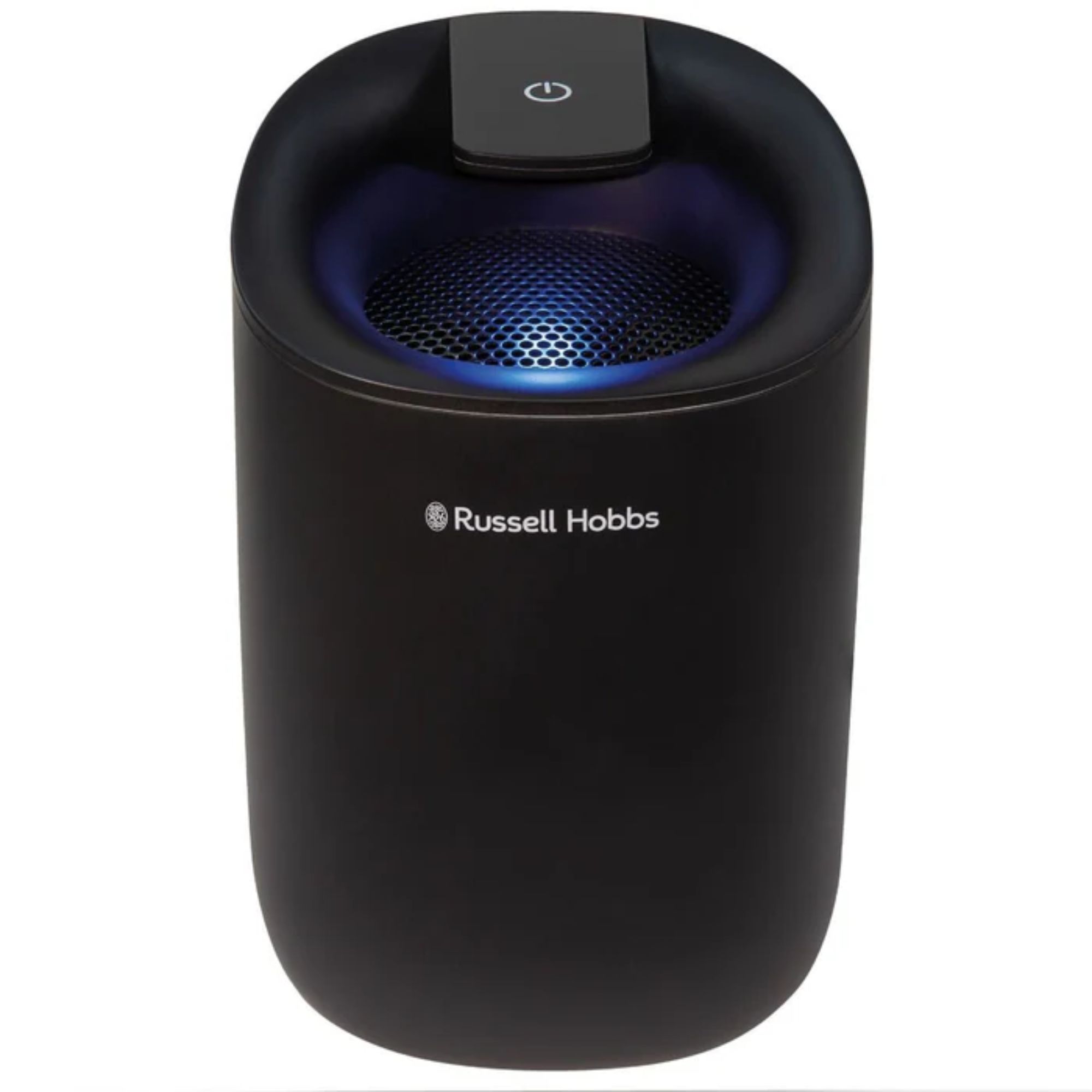
The best compact dehumidifier
Whether you're looking for a budget dehumidifier, a portable dehumidifier, or simply one for small spaces, this ticks a lot of boxes. It's no bigger than a speaker, but it's a proper powerhouse. I've used it in my flat to dry laundry as well as in my bedroom overnight. It's seriously impressive.
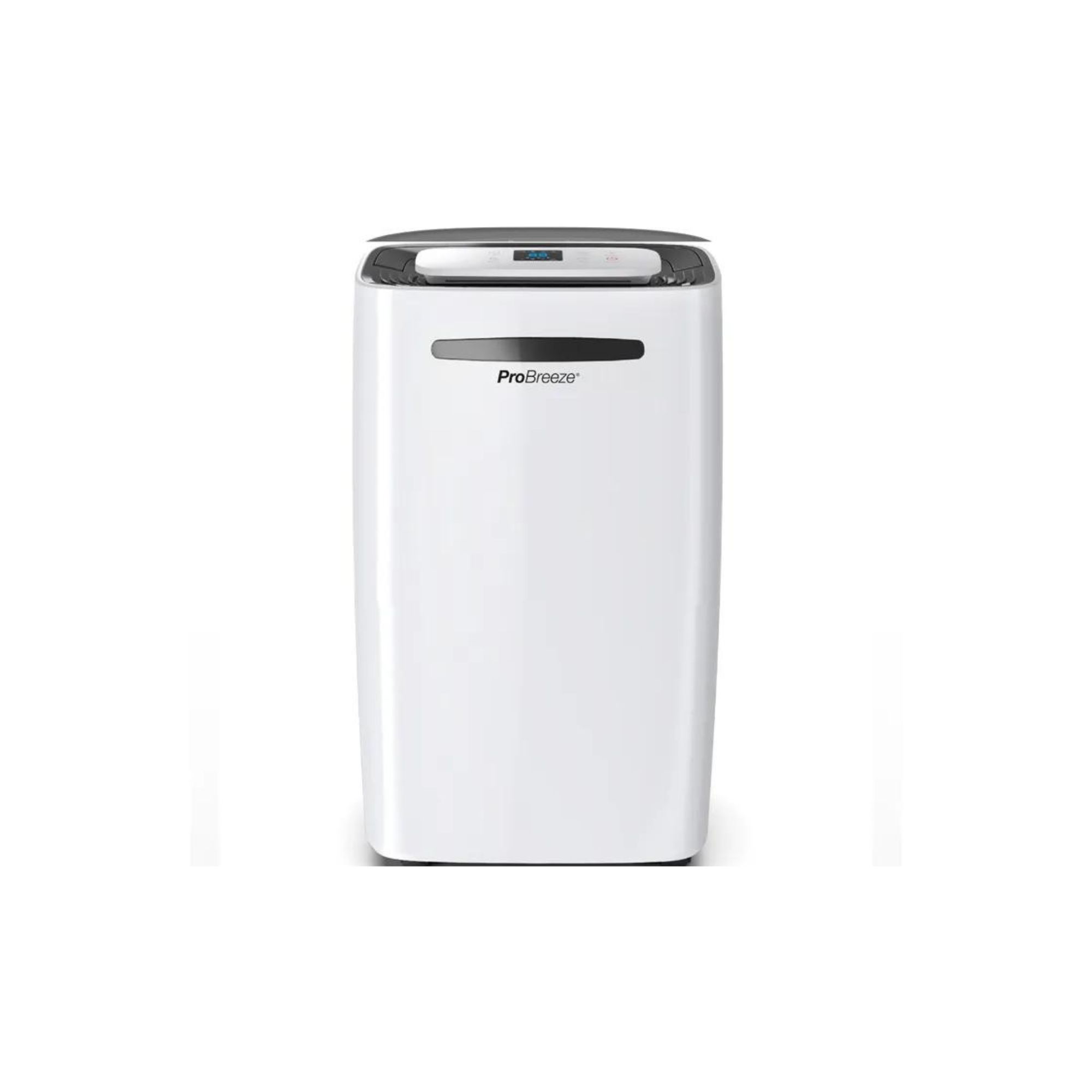
The best dehumidifier for dampness
A wet, damp room is the worst, but thanks to this Pro Breeze model being able to hold a large capacity of 5.5L of water, removing 20L per day, your room will be left clean and moisture-free. This comes with lots of cool extra functions that you'll love too.
Load the next 3 products ↴

The best value dehumidifier
The MeacoDry Arete One is an all-around great dehumidifier. It's simple, easy to use, great for families with little ones, and quiet. It even has a laundry mode, that I got a lot of use from.
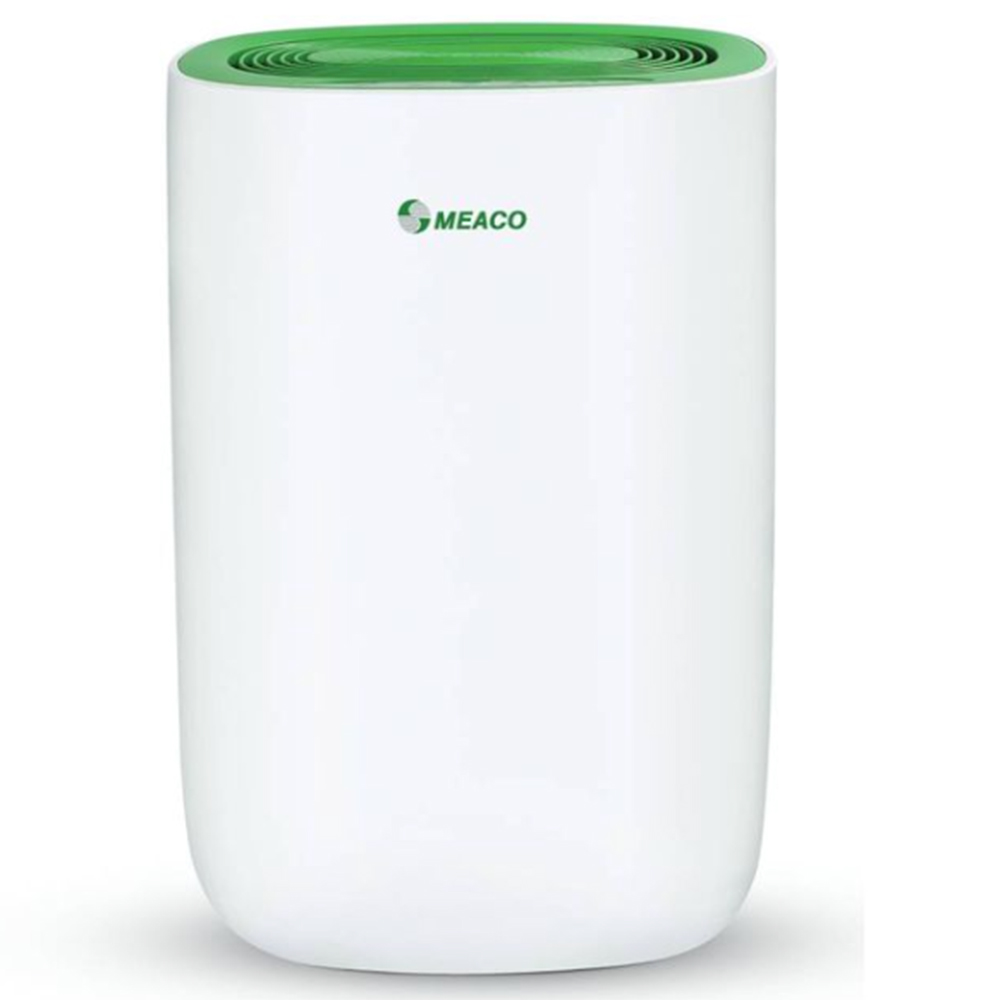
The most energy efficient dehumidifier
The ABC is perfect for a three bedroom home with light condensation. It tackled drying clothes like a workhorse (halving drying time) and worked with impressive energy efficiency too. It's one of those set-it-and-forget-it dehumidifiers.

The best dehumidifier under £50
If you have a leaky pipe, damp cupboard, or small space that needs some extra attention, this is perfect. Mini, but mighty, it'll clear up to 1.5L out of your damp spaces in a day. At £50, it's a clear winner.
The best dehumidifiers: tried & tested by our experts
The best dehumidifier overall
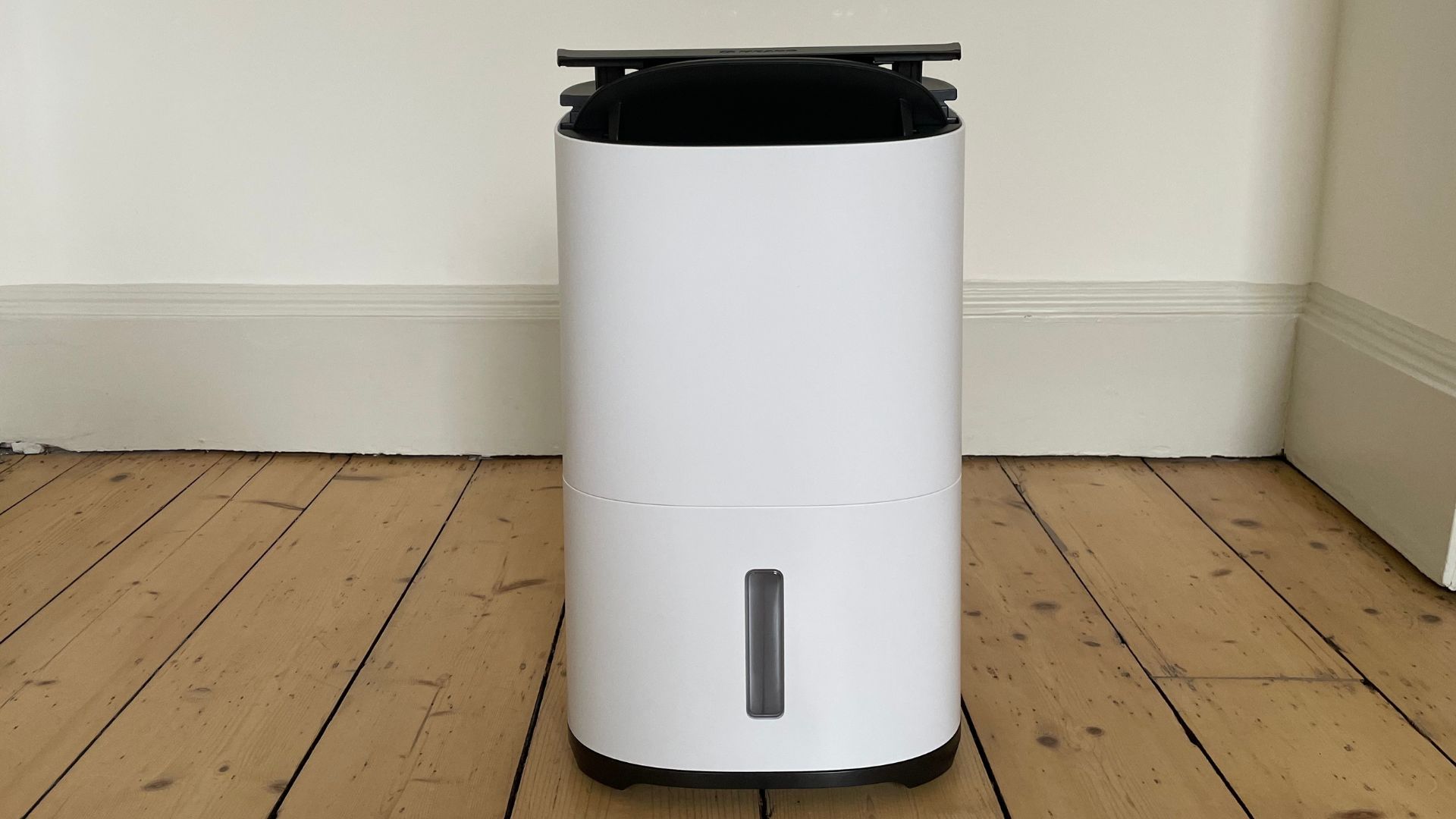
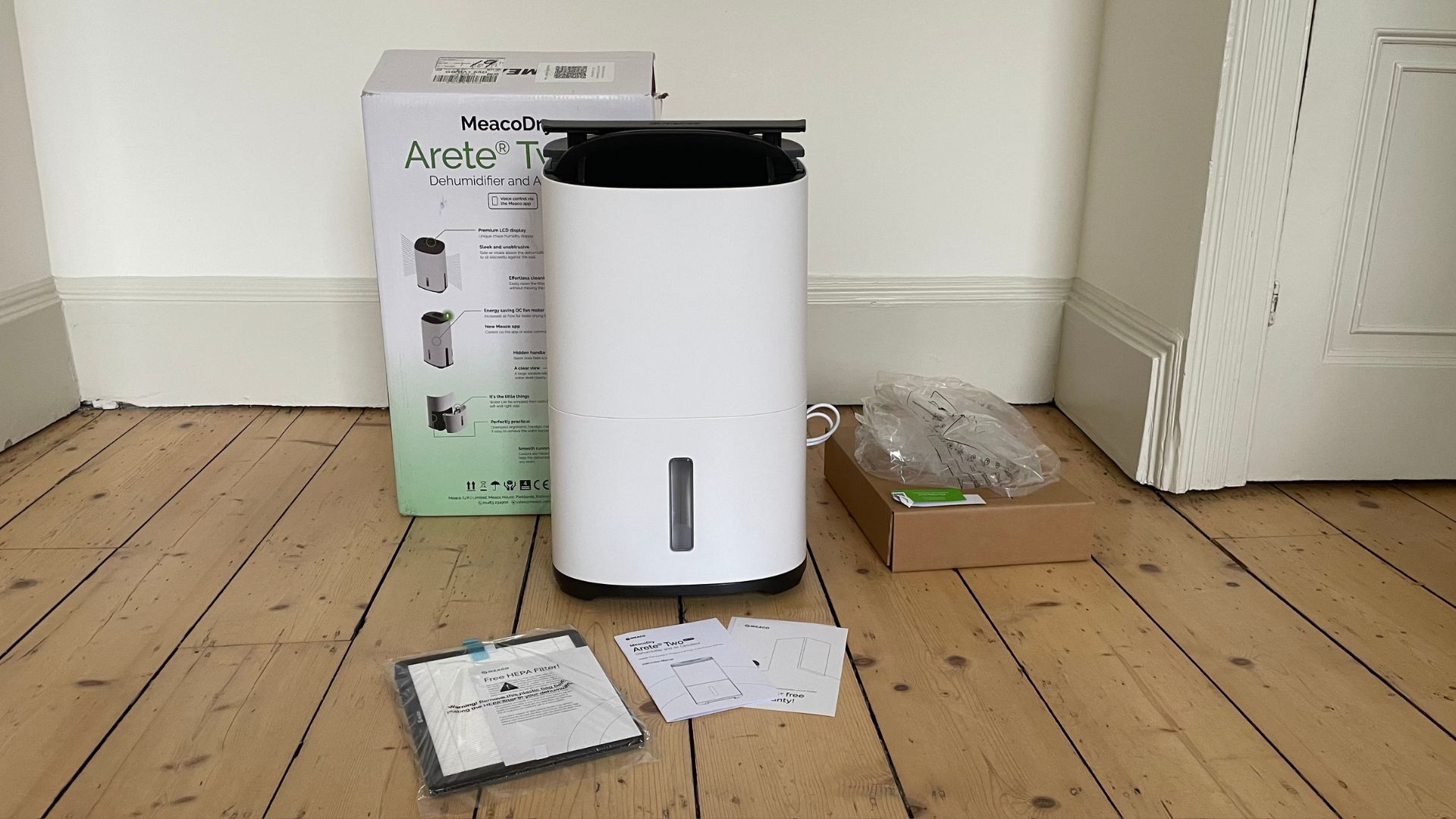
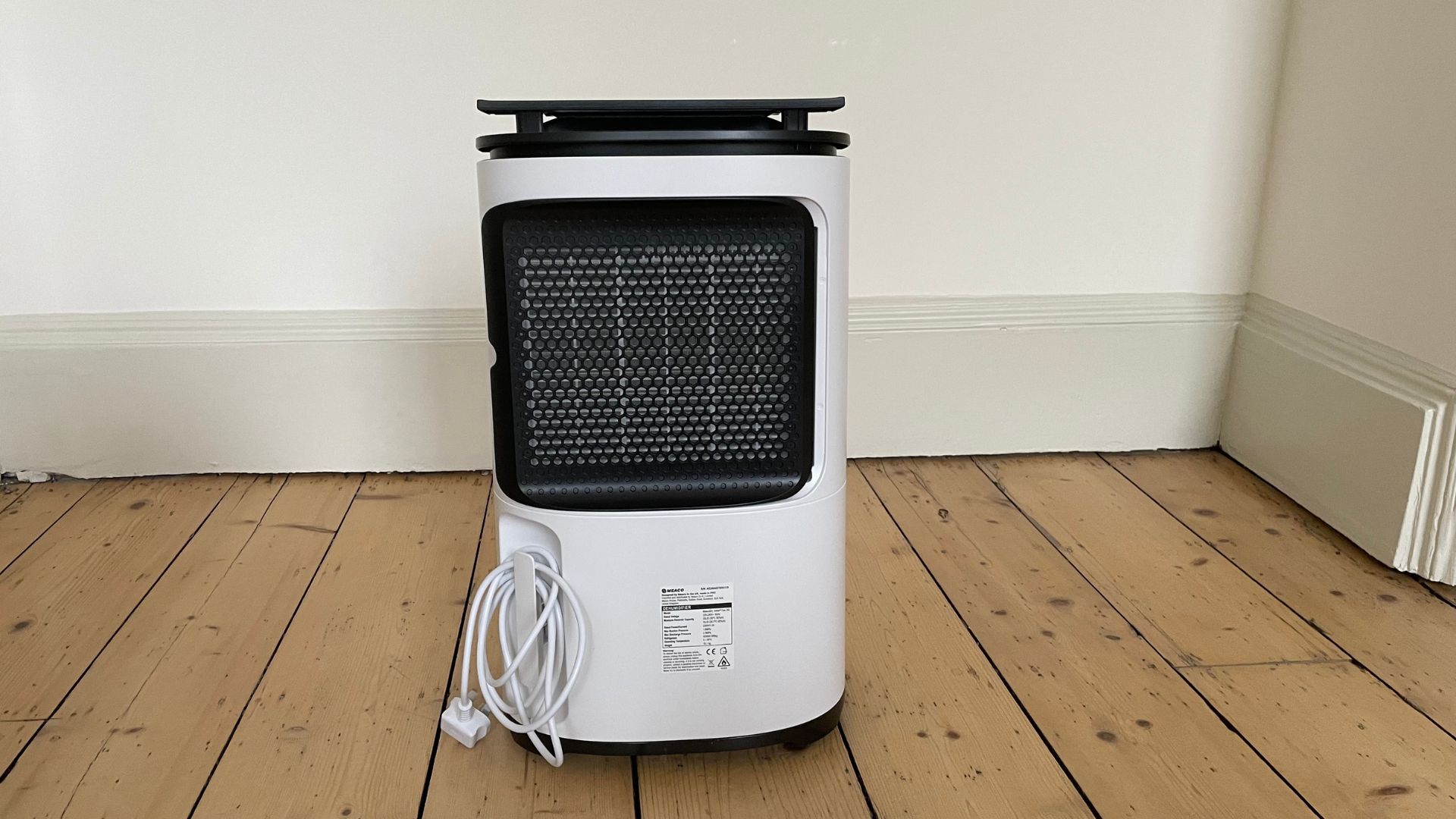


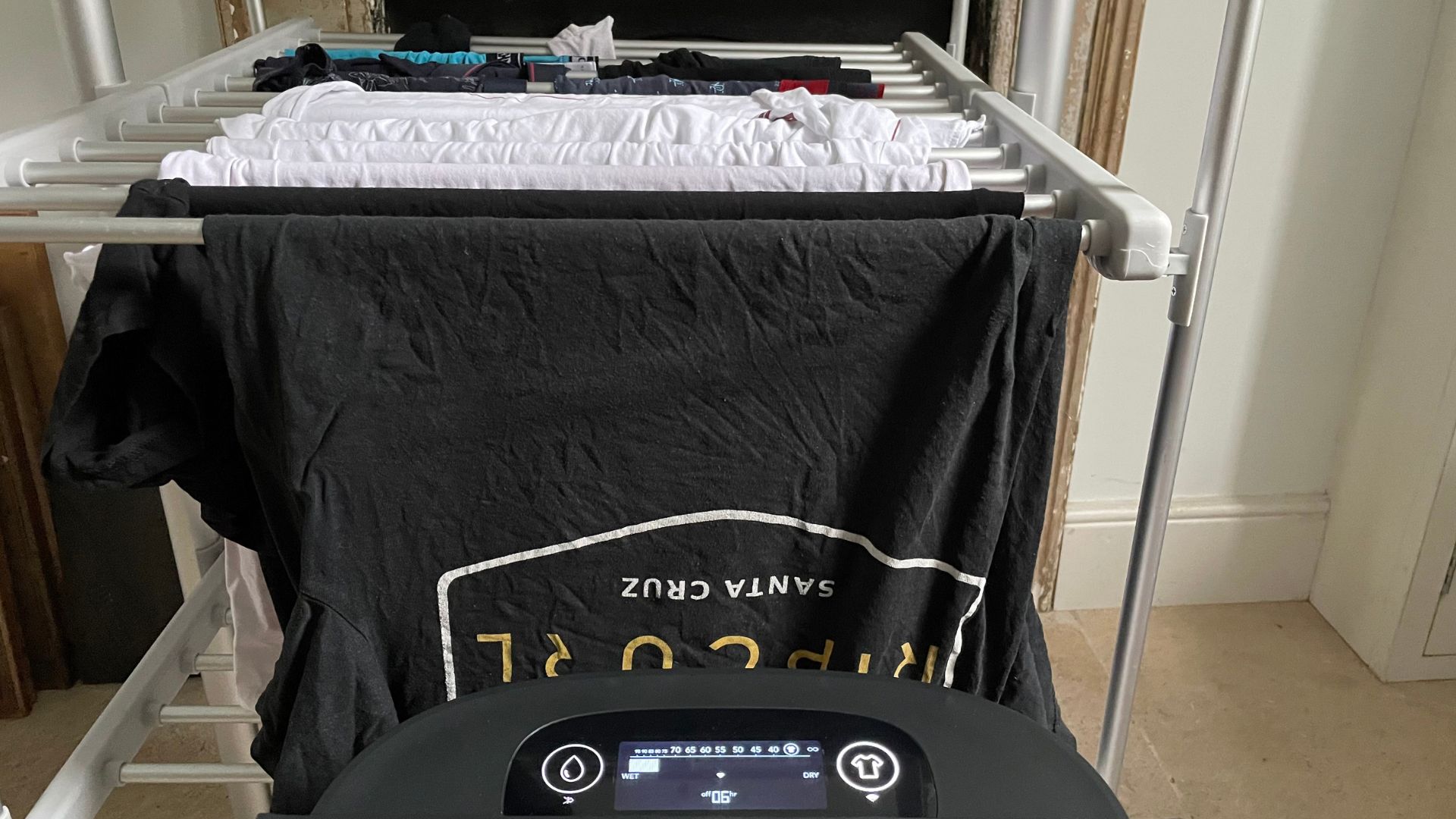
Specifications
Reasons to buy
Reasons to avoid
Before the MeacoDry Arete Two claimed the top spot, its predecessor — the Arete One— held the crown. Both are robust, energy-efficient, and user-friendly, but the Arete Two takes things up a notch with a standout LCD display, voice controls, 24 hour timers, and the ability to direct airflow into specific rooms.
Available in 10L, 12L, 20L, and 25L sizes, there’s a model to suit every home. I use the 10L in my bathroom (a great size for most households), and I haven’t looked back. It’s so quiet (running at around 32dB) I often forget it’s on, but the results speak volumes. Gone are the days of damp walls, lingering condensation, and laundry that refused to dry. Given that this costs just 3p per hour to run, I'll happily leave it on ‘Smart Humidity’ mode, and it automatically adjusts to the room’s conditions — even after all five members of the house have had steamy showers, the bathroom mirror stays clear. I've even managed to get laundry dry faster than with my heated airer. Can you see why it got 100% on my review?
Beyond dehumidifying, the Arete Two is one of the most energy-efficient models around and comes with a built-in HEPA filter, doubling as an air purifier. With this level of performance and flexibility, it’s honestly hard to fault.
You can find out more in my full MeacoDry Arete Two Dehumidifier review.
The best dehumidifier for bedrooms


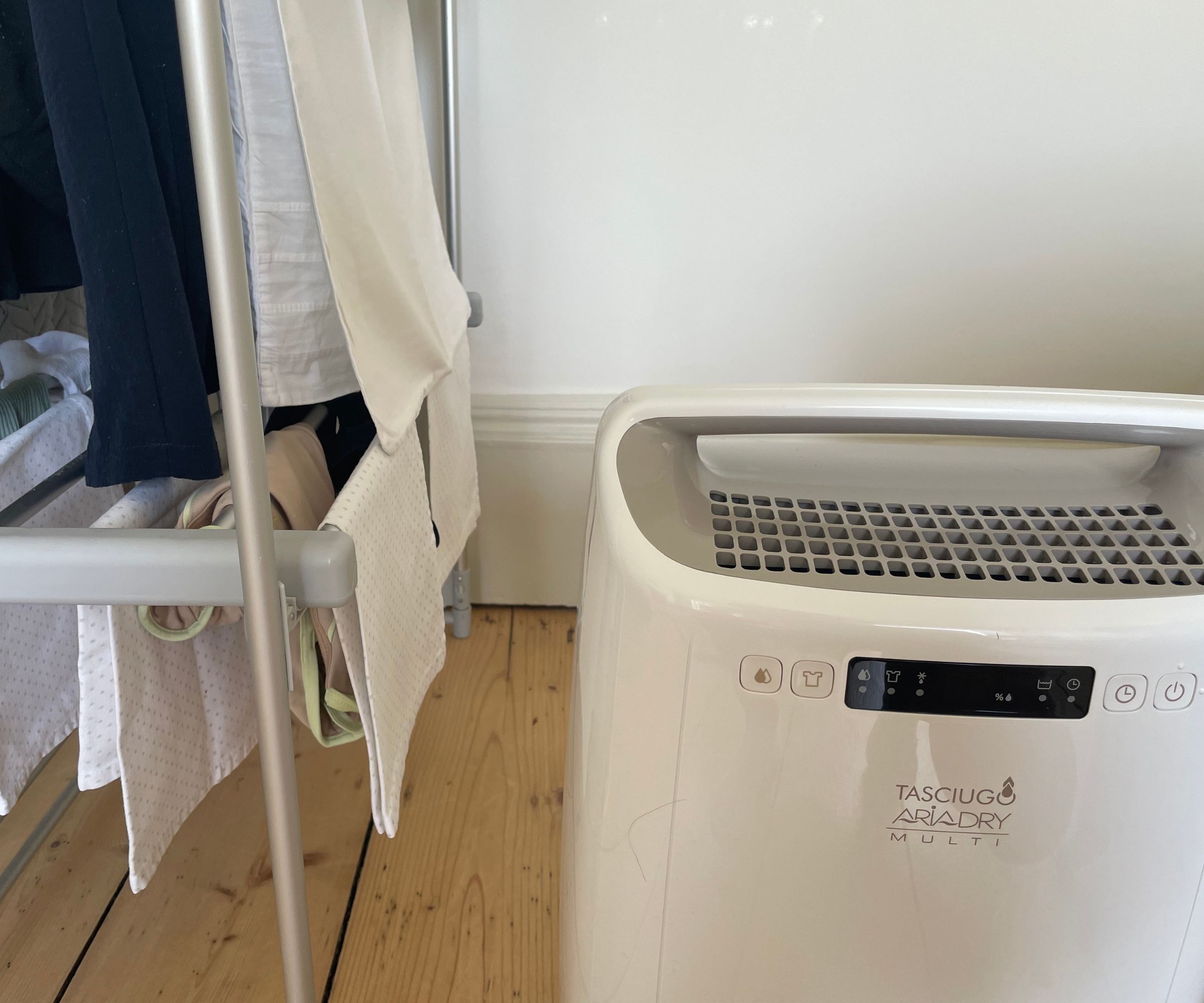

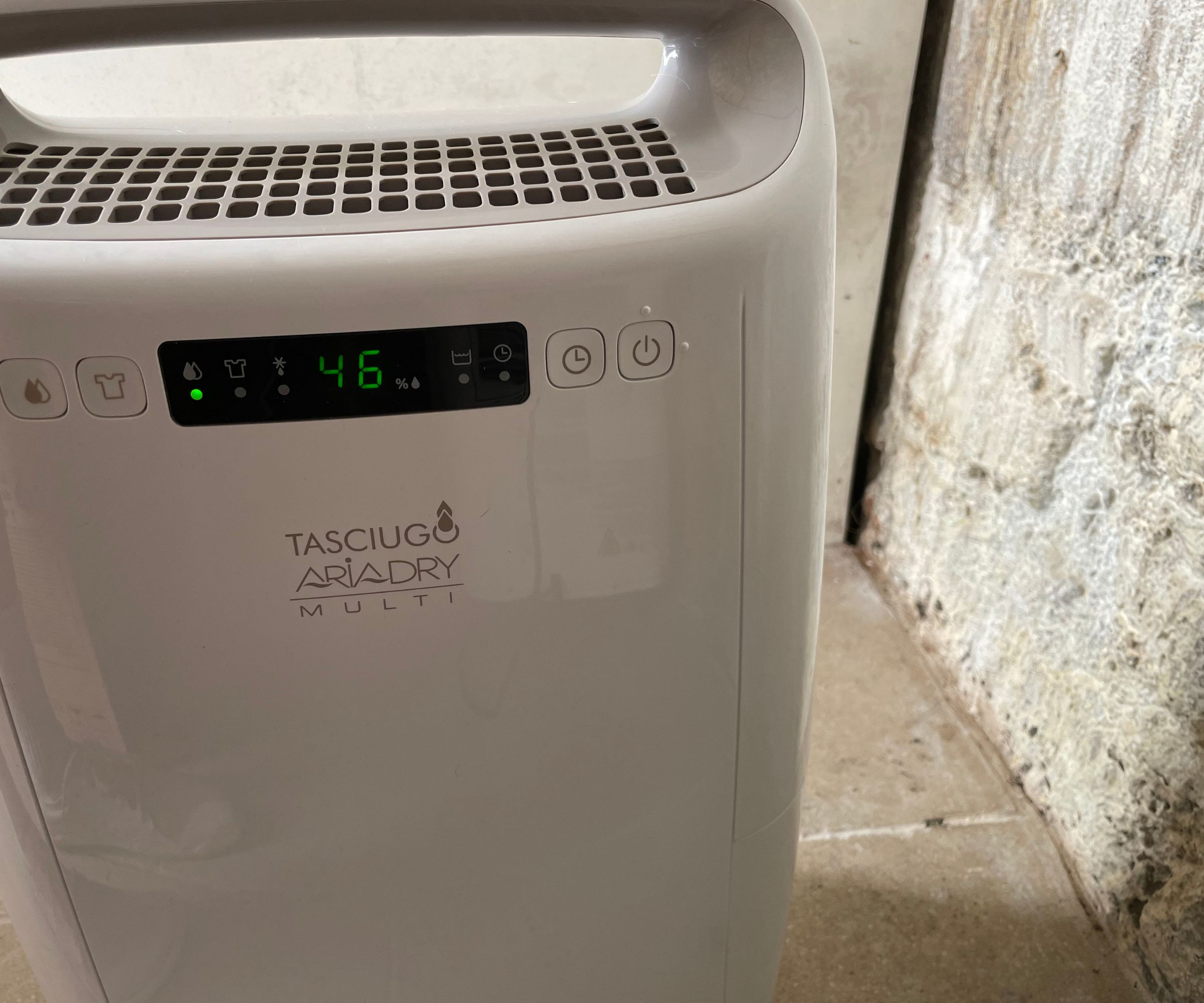
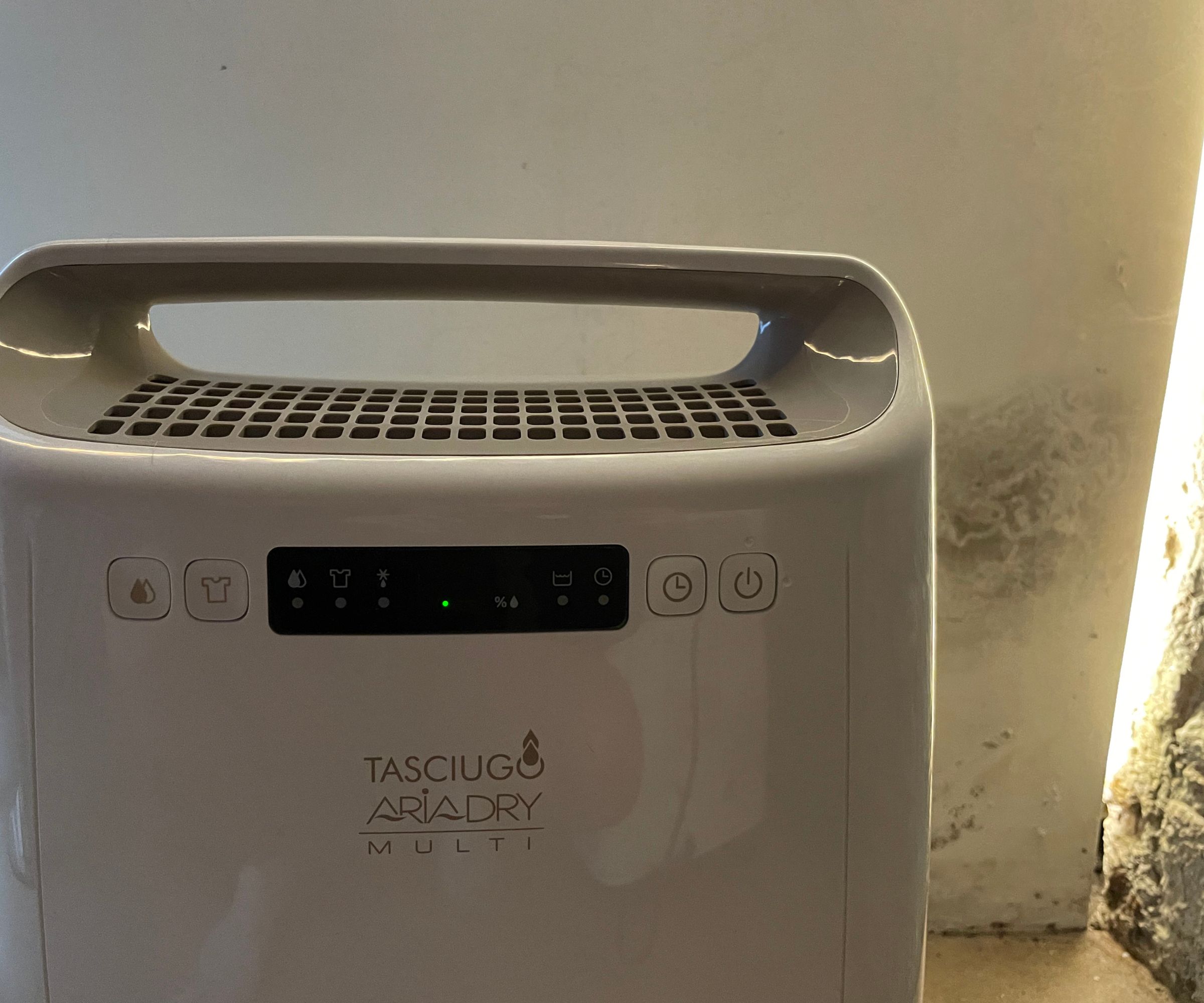
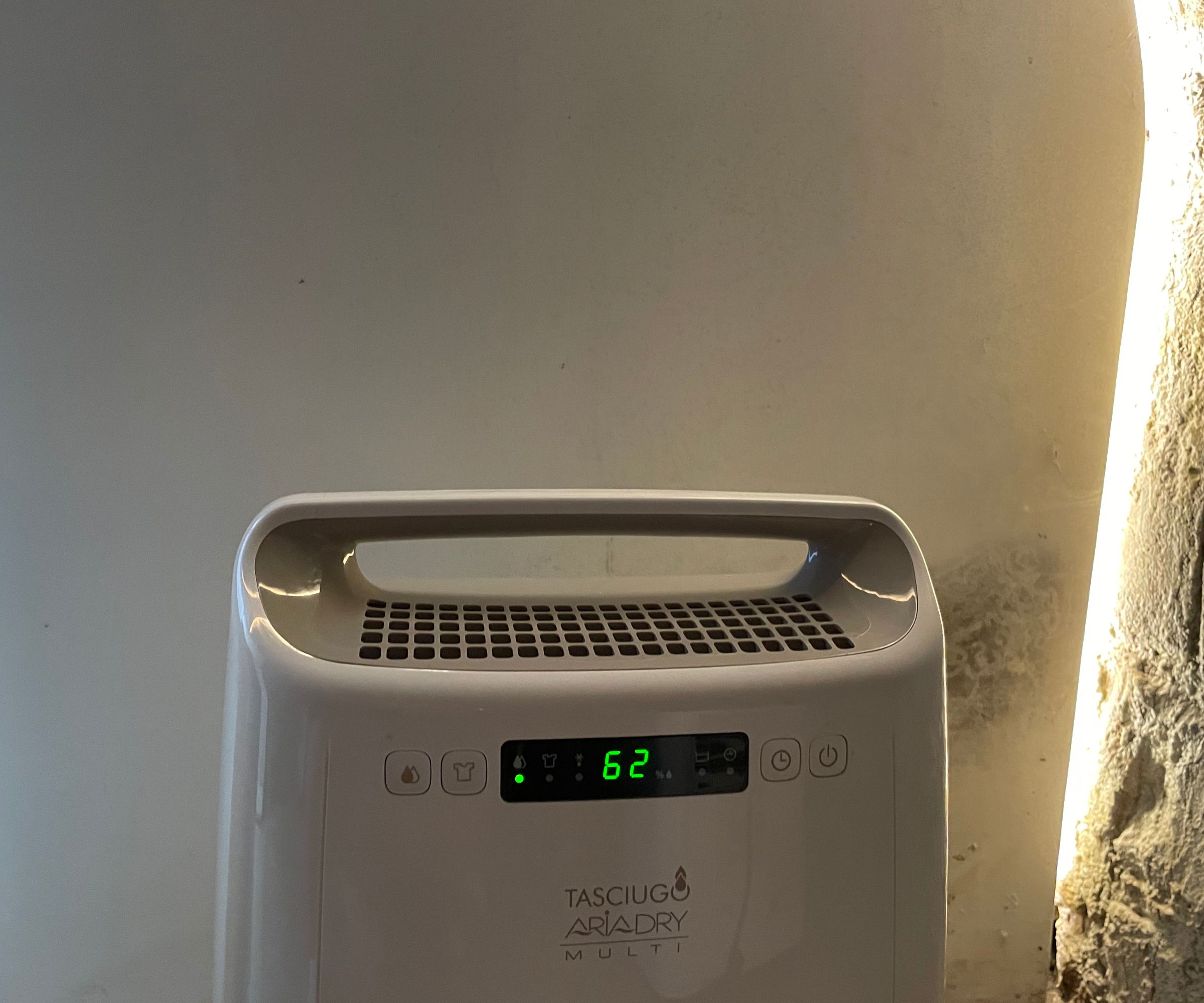
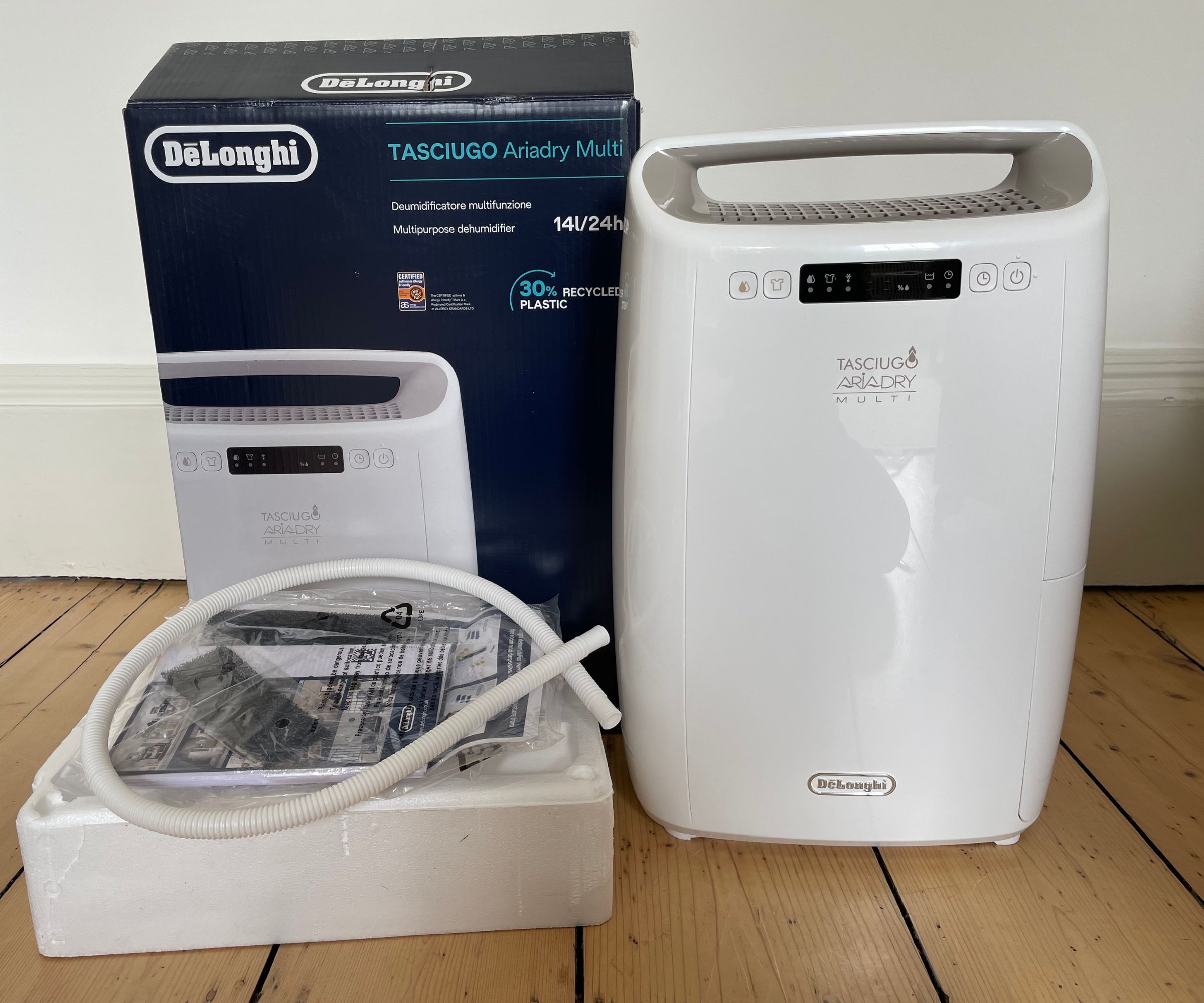


2. De'Longhi DEX212F Tasciugo AriaDry Multi Dehumidifier
Our expert review:
Specifications
Reasons to buy
Reasons to avoid
There isn't any other dehumidifer that comes close to the noise levels (or absence, as it were) of the De'Longhi. It's so quiet (running 24 dB) that I wasn't even sure it was running. You could sleep with this on, you could watch TV with this on. I reckon you could even meditate with this on. It's certainly the best dehumidifier for a bedroom, by a mile.
Beyond the whisper-quiet function, this Italian-made dehumidifier is everything you would expect aesthetically. It's slim, sleek, and beautiful, as far as these appliances go. You can use the handle and castor wheels to move the main body around, which very much needed. The De'Longhi is heavy.
Don't let the more complex menu put you off. You'll see a few buttons, but these are indicators of one laundry mode and three dehumidifying settings, and a night mode. Most the dehumidifiers in this guide have the same offering. However, one of the USPs of the De'Longhi is its frost protection, making it perfect for cellars in the winter.
It’s not all about controlling humidity though: hygiene is another of its concerns, and it has filters for dust and allergens as well as the capacity to neutralize undesirable bacteria to improve air quality in your home.
Read my full De'Longhi DEX212F Tasciugo AriaDry Dehumidifier review for more details.
The best dehumidifier for drying clothes
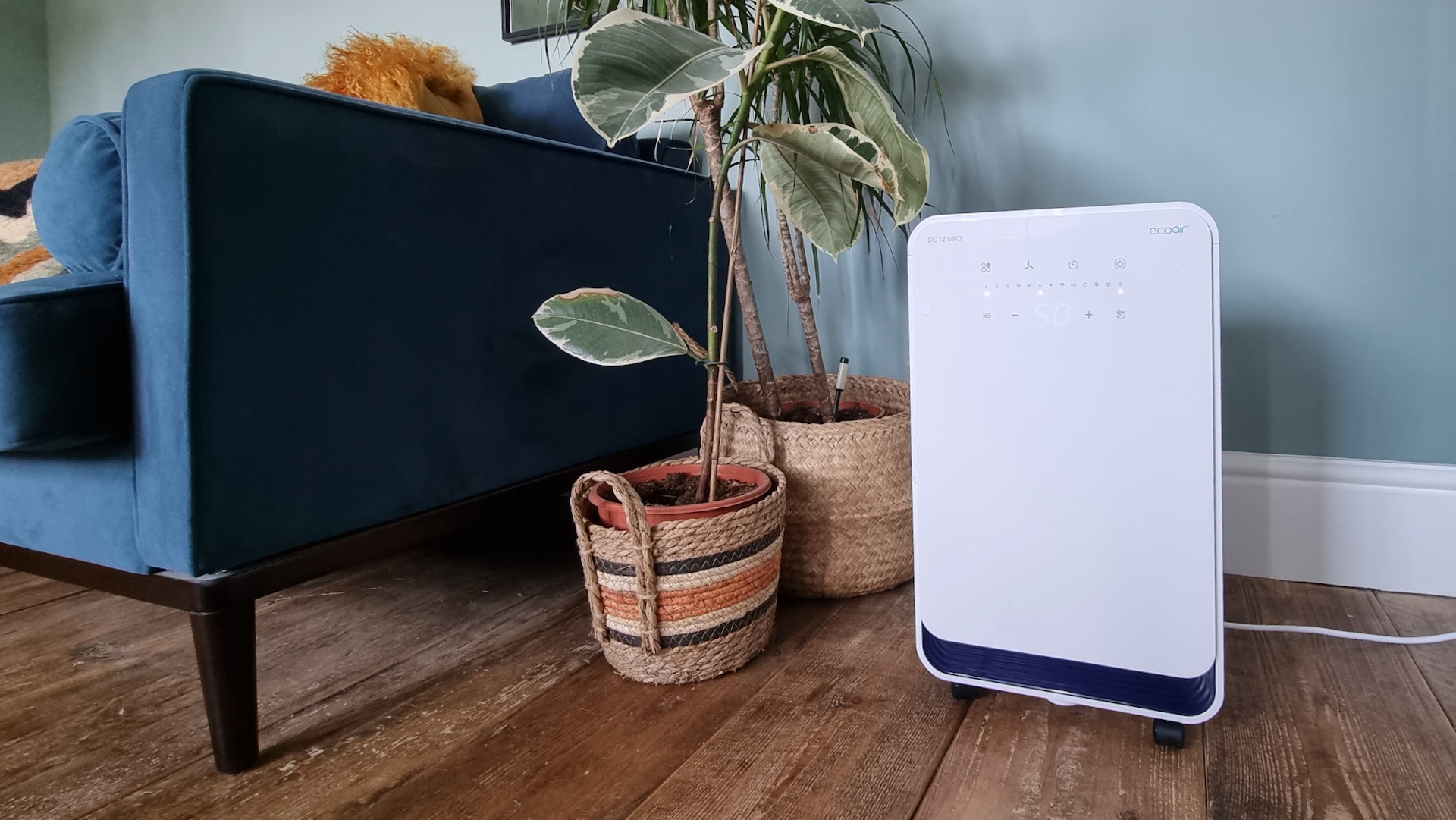

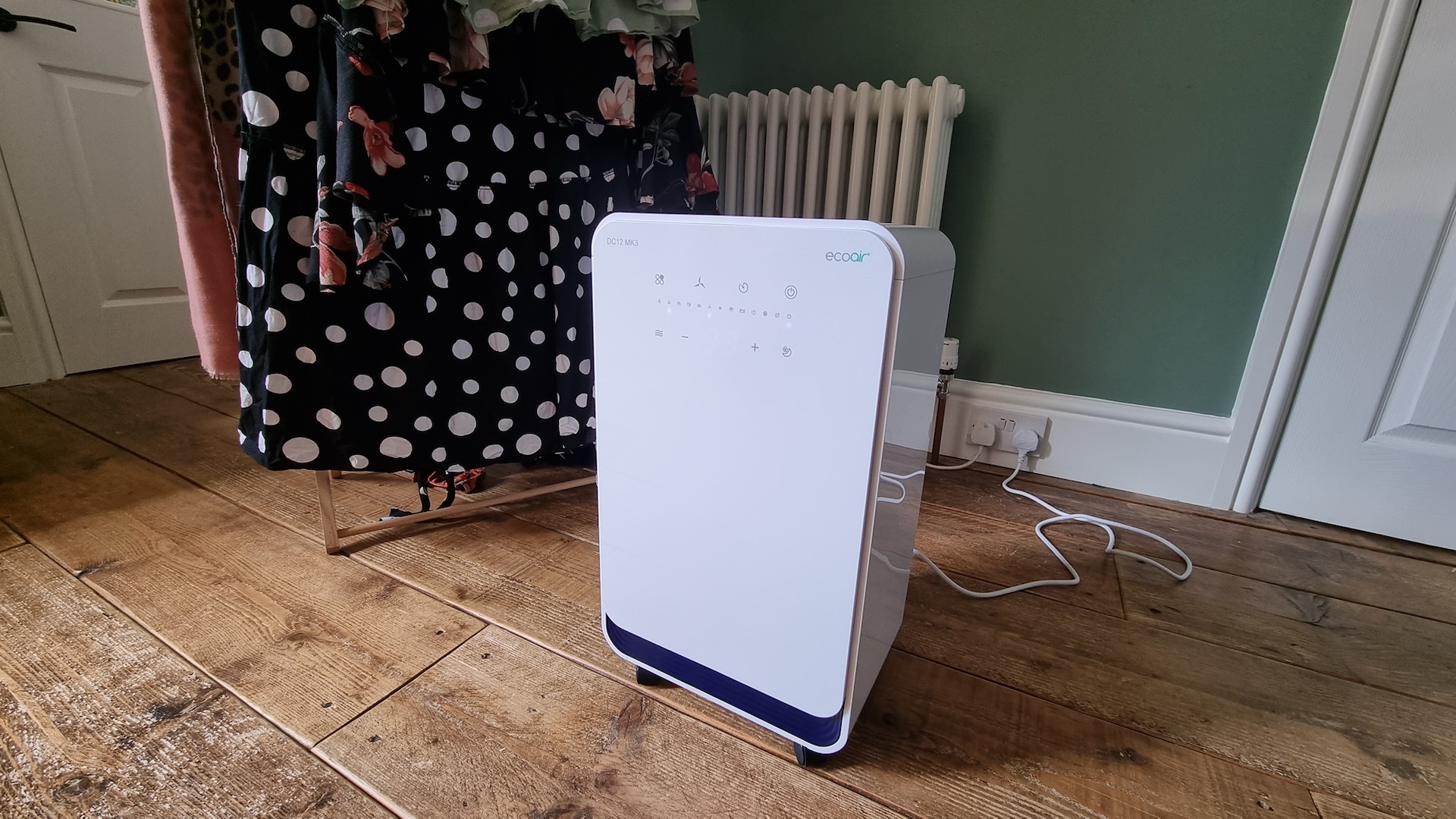
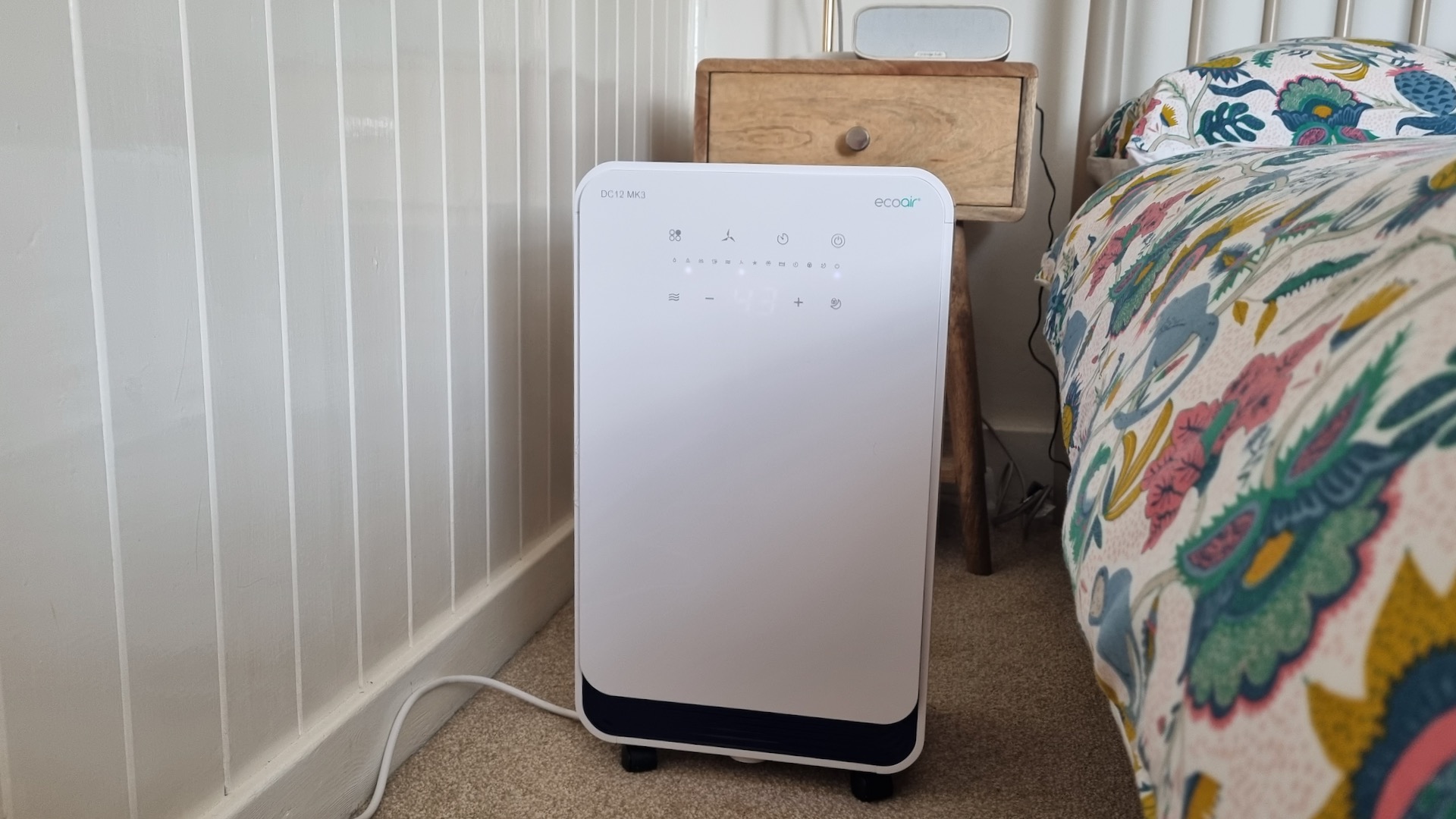


3. EcoAir Desiccant 8L Dehumidifier DD128
Our expert review:
Specifications
Reasons to buy
Reasons to avoid
The EcoAir DD128 is a versatile desiccant dehumidifier – while great for colder spaces, it’s also efficient in the home (and especially around laundry). Amy used this for a month in her home and said "it's incredibly powerful. In fact, I noticed it collecting moisture much more quickly than most other models that I've tested." She also added that the long cord made it really convenient to position around her homes.
The mode that really stands out to Amy is the laundry setting. "It's a really special feature," she says, "as well as capturing the moisture it also blew out warm air, meaning my load of washing was dry in a matter of 5 hours as opposed to 3 days. The timer function meant I didn’t have to leave it running all night to get those clothes dry either – it can be set to power down in two, four, or eight hours."
There’s a decent 2.2-litre tank on this model, which is easily removable from the side of the unit for emptying and even has a built-in handle for ease. But also, if you want to leave it for long periods of time, it comes with a handy hose for continuous drainage.
Amy's few criticisms are that this is not the most intuitive to use, although that’s to be expected with a model that offers lots of different settings. She got the hang of it after going over the instructions a couple of times. She also cautioned that this is loud when running (clocking in at 54 dB), so it's not one for the living room.
Read Amy's full EcoAir Desiccant 8L Dehumidifier review for more details.
The best dehumidifier for bathrooms
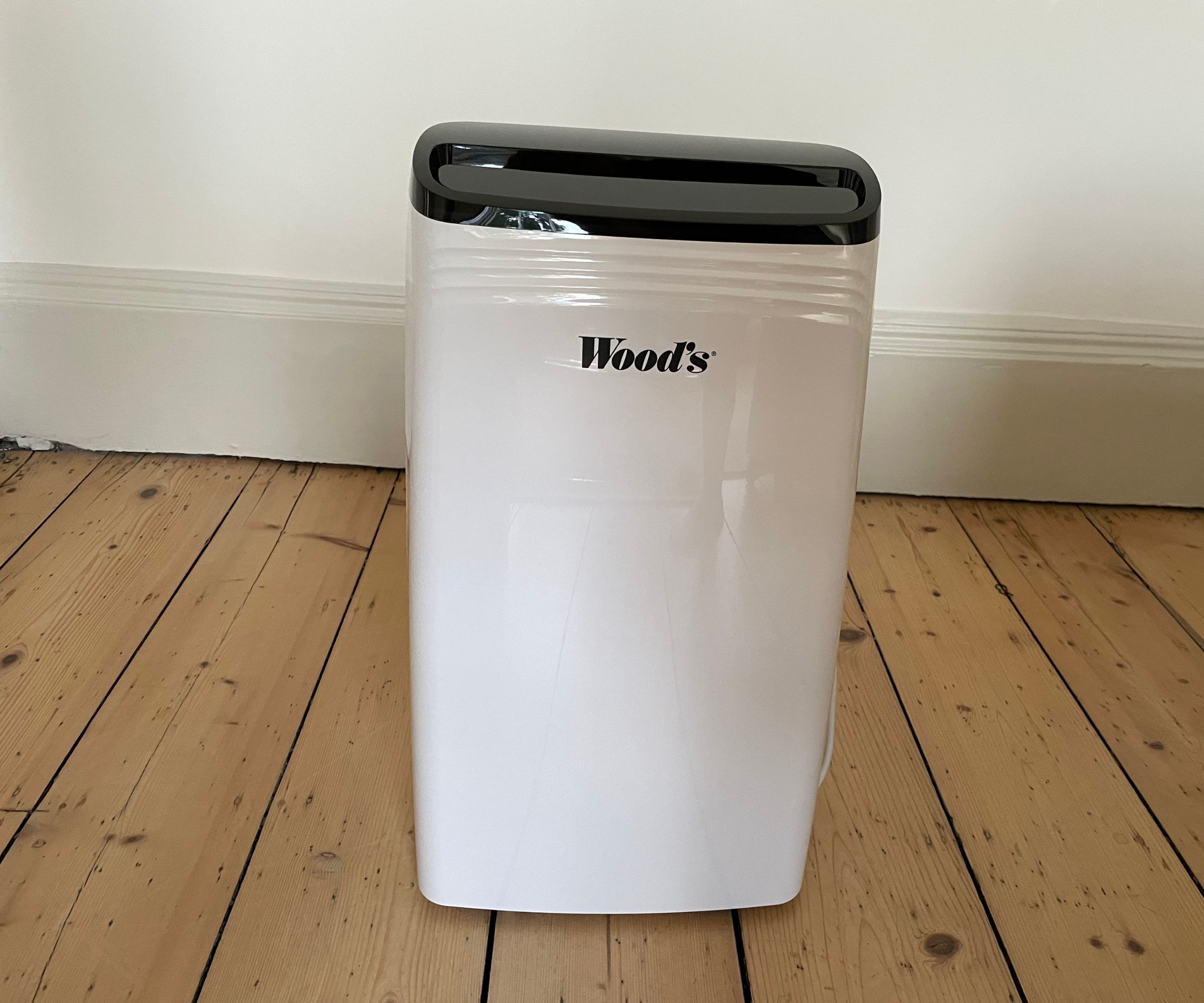
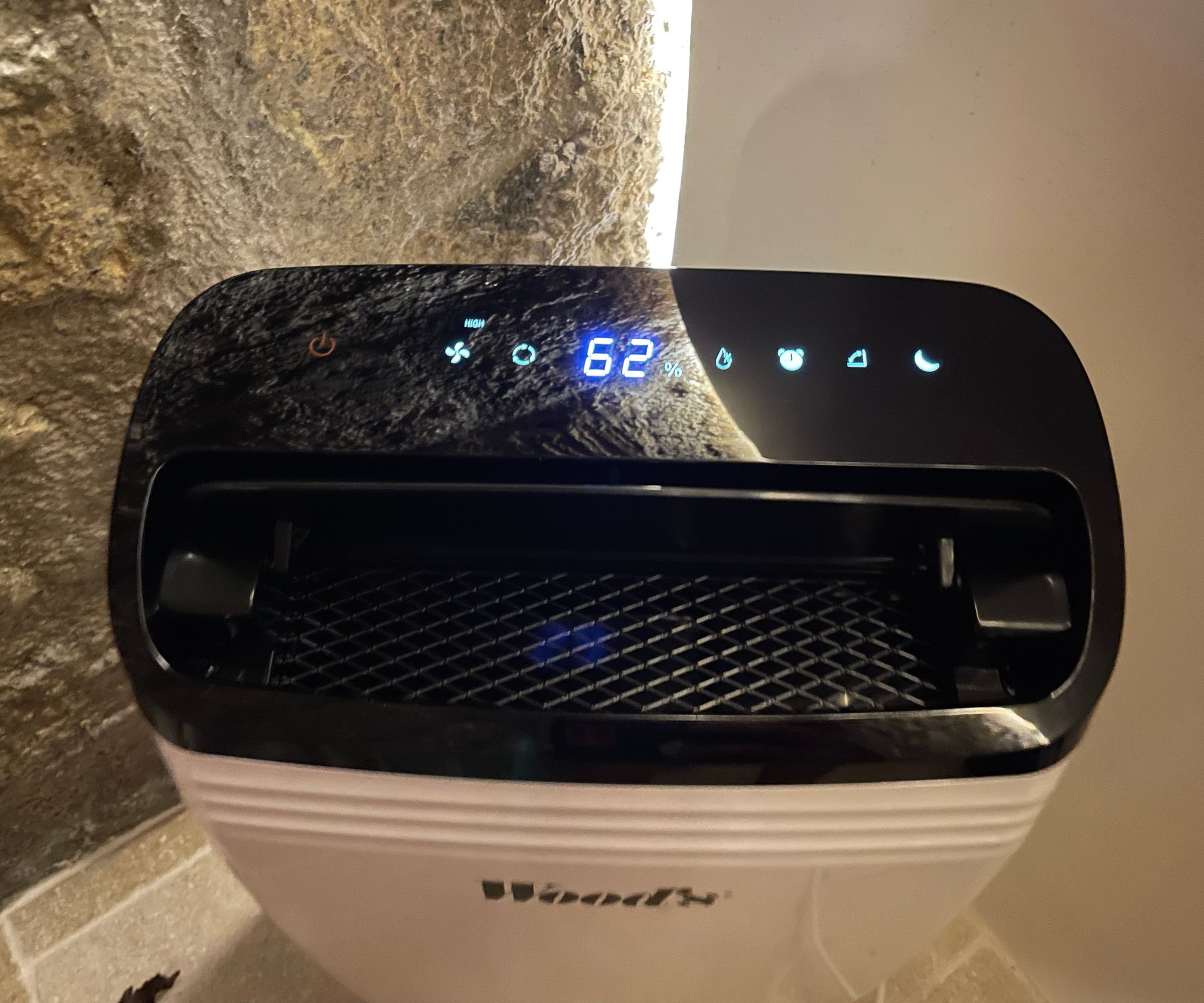

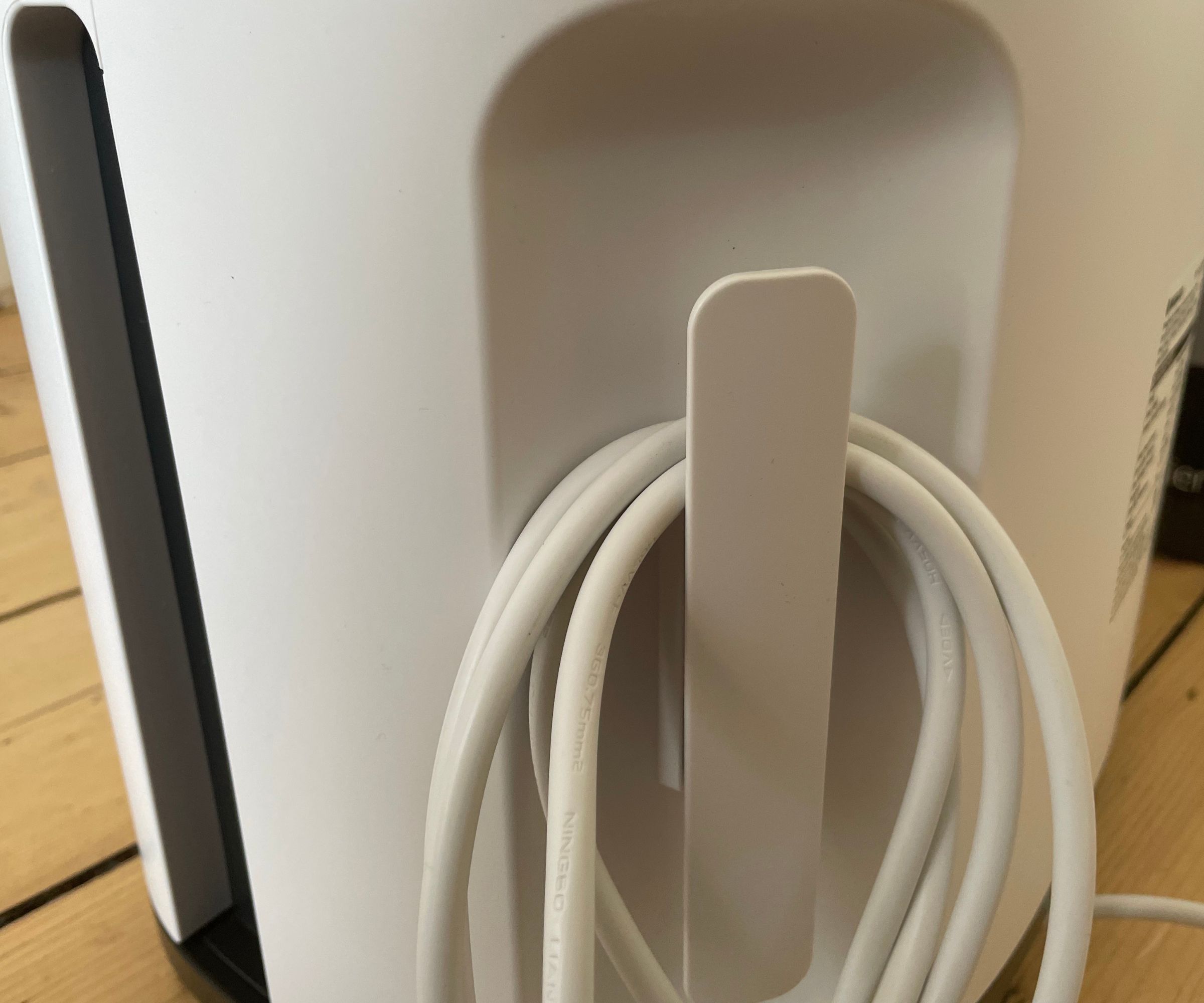
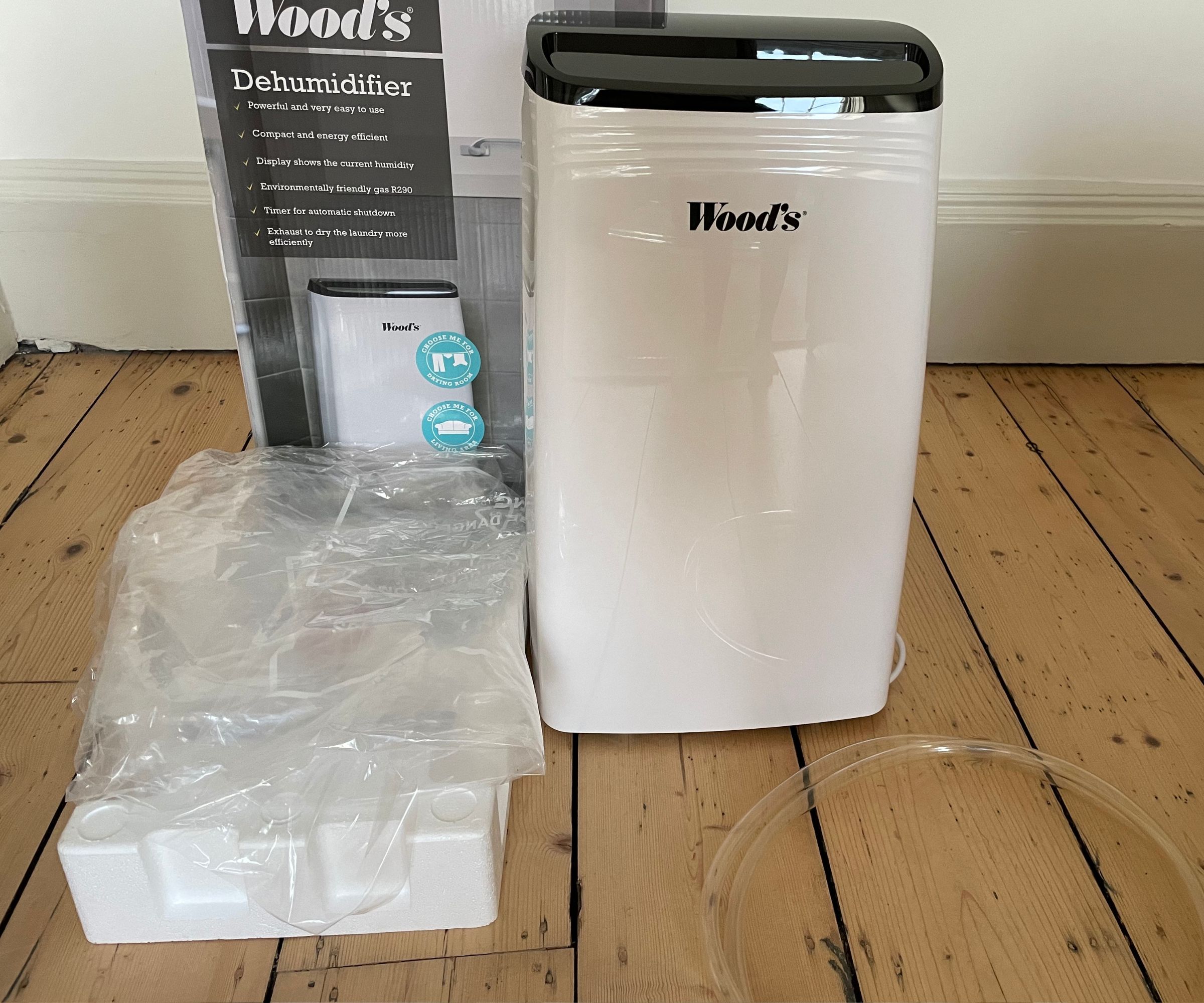

4. Wood’s Dehumidifier MDK26
Our expert review:
Specifications
Reasons to buy
Reasons to avoid
Woods makes some seriously impressive dehumidifiers, some are even close to industrial. In spite of its smaller stature, this is one of my favourites. It cleared condensation in my bathroom in record time (20 minutes) and didn't generate much noise (35 dB) or demand much power in the meantime. What else would you expect from the revered Scandi brand?
The reason that I would use this in my bathroom isn't just for its power and speed though. The Woods is also super slim, making it easy to slot into smaller spaces and nooks nearby the bathroom. Even though it's relatively heavy, I found this really easy to move around thanks to its in-built carry handle. Although, it's worth noting that this doesn't have wheels as some other models do, so this might suit homes with more carpet than solid floors
With just a handful of touch buttons, the interface is straightforward to use, allowing for quick programming and slick switching between functions when needed. When running, the Woods emits a low hum at between 30-35 dB, but nothing that would disturb you during the day. Come the evening there isn't a night mode which means you’ll be falling asleep to the light buzzing of an electronic device which I could personally do without. It's better company in the daytime when you're not looking for some peace and quiet, a bit like me.
Read my full Wood's MDK26 Dehumidifier review for more details.
The best compact dehumidifier


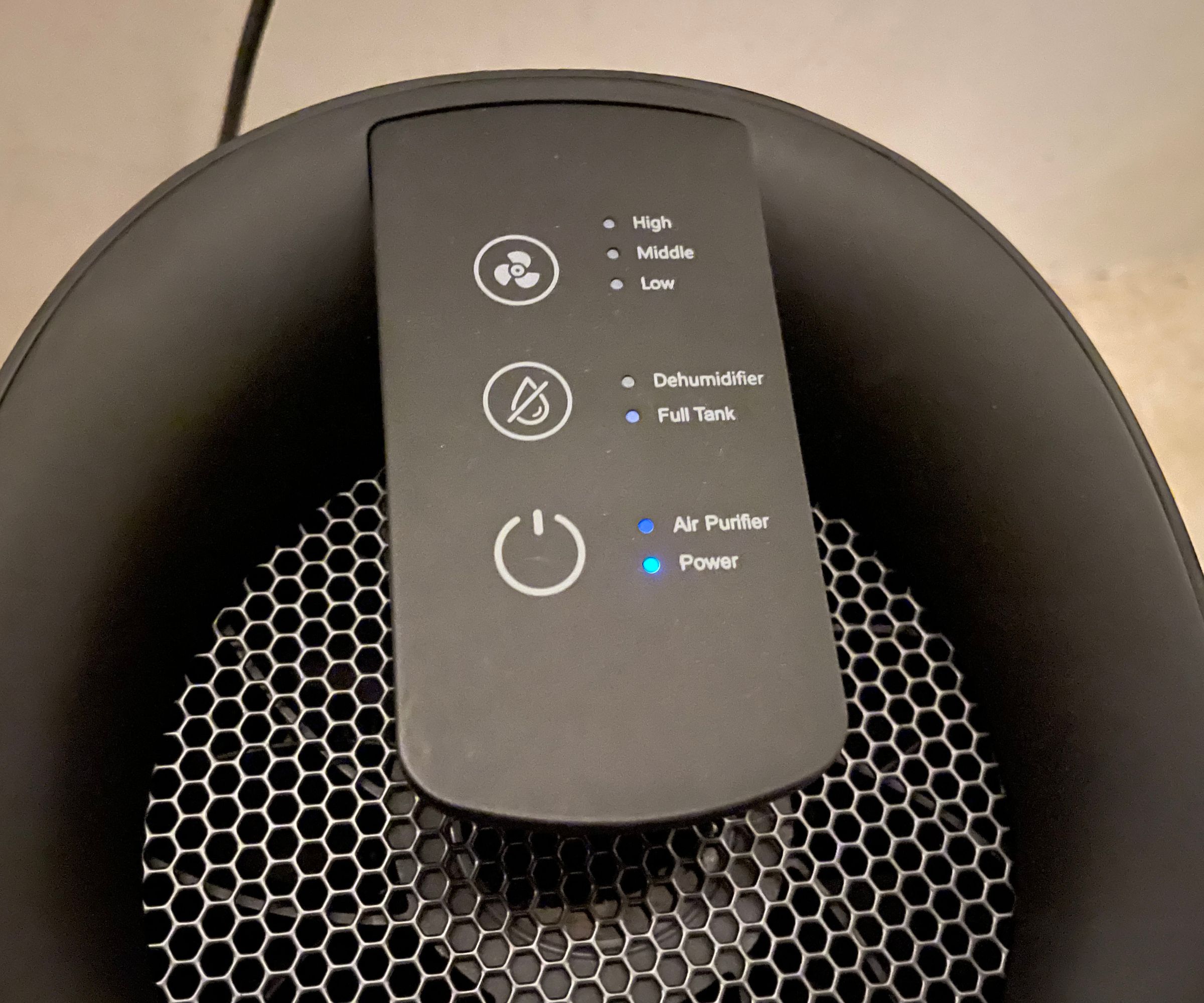
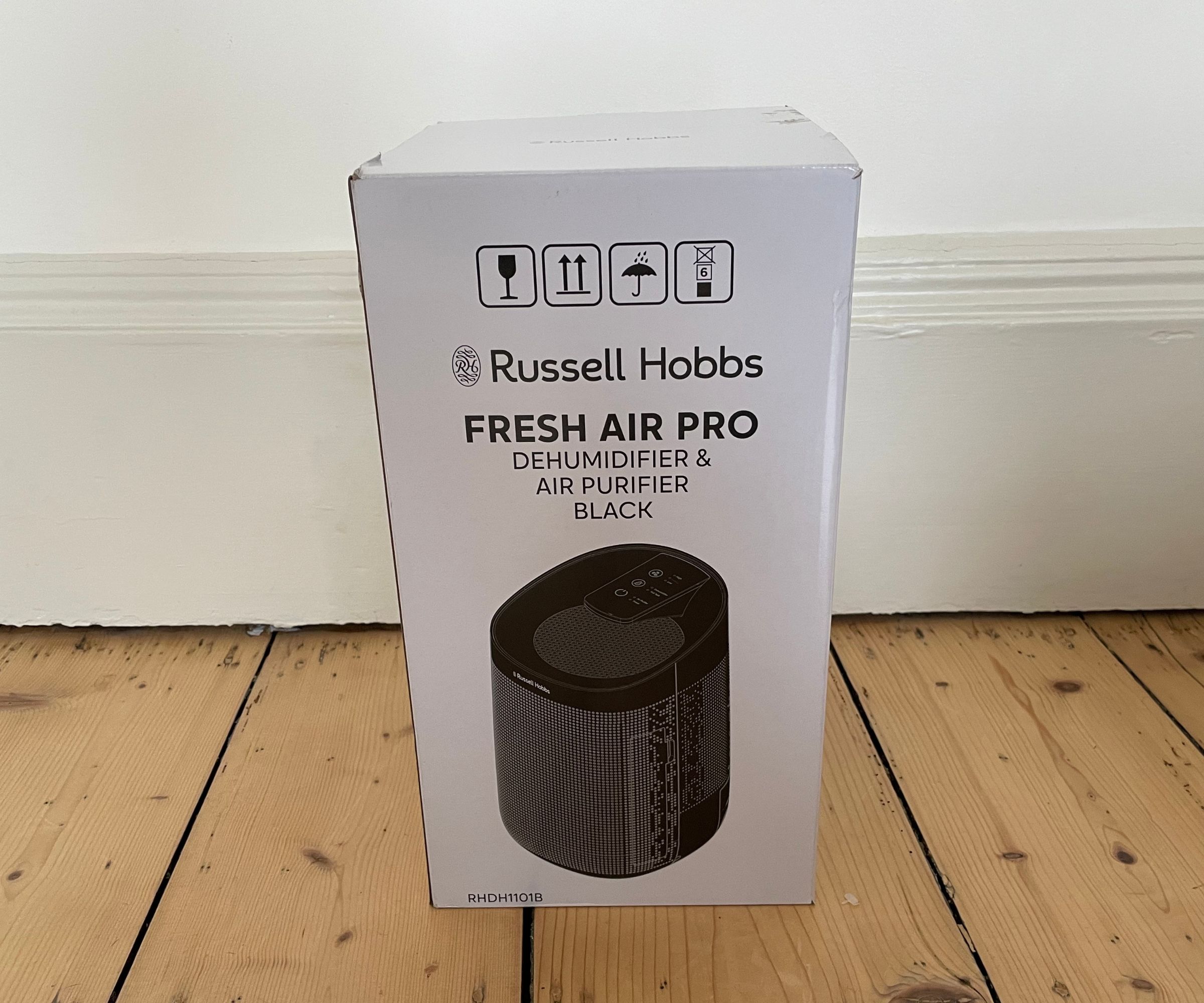
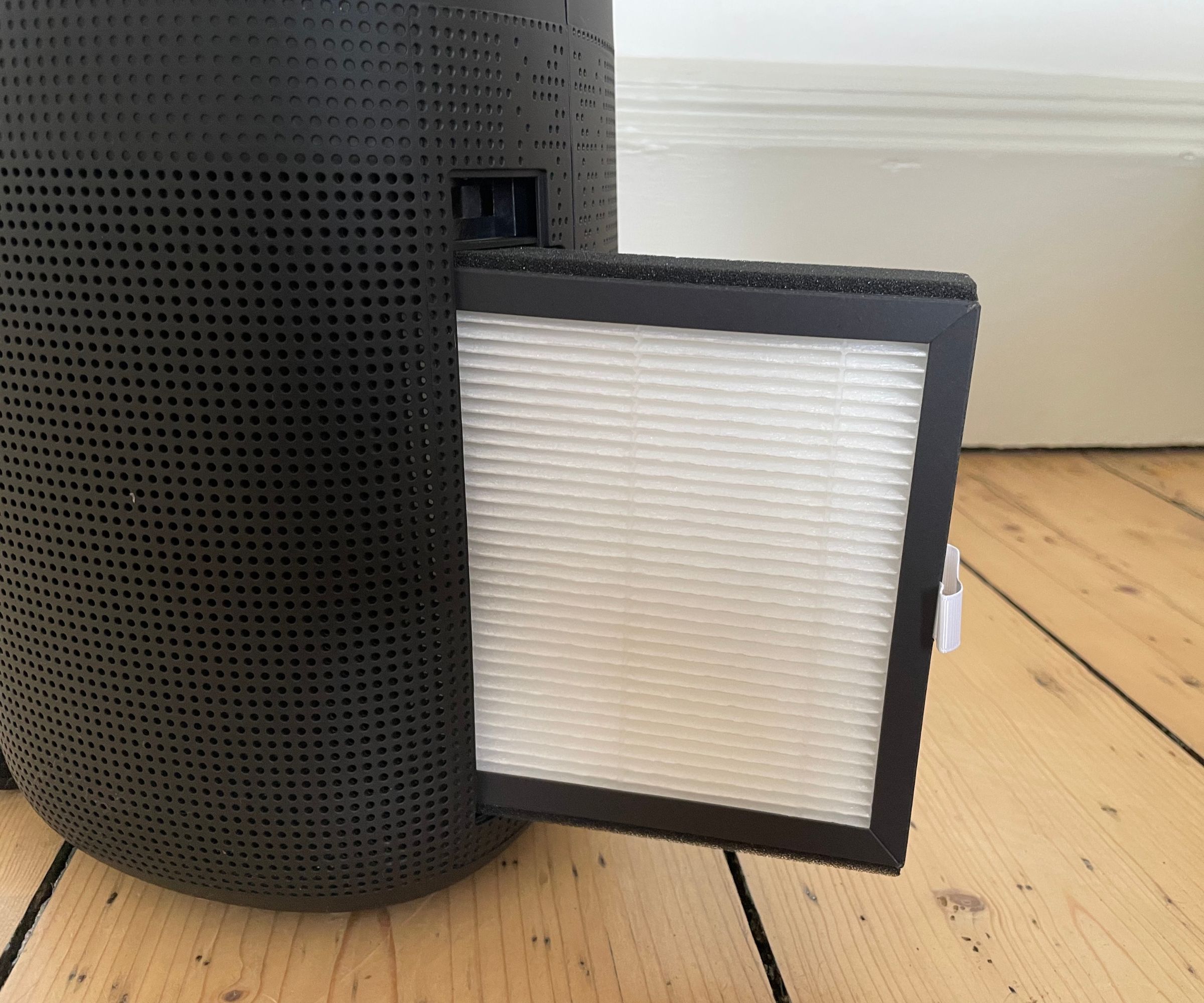
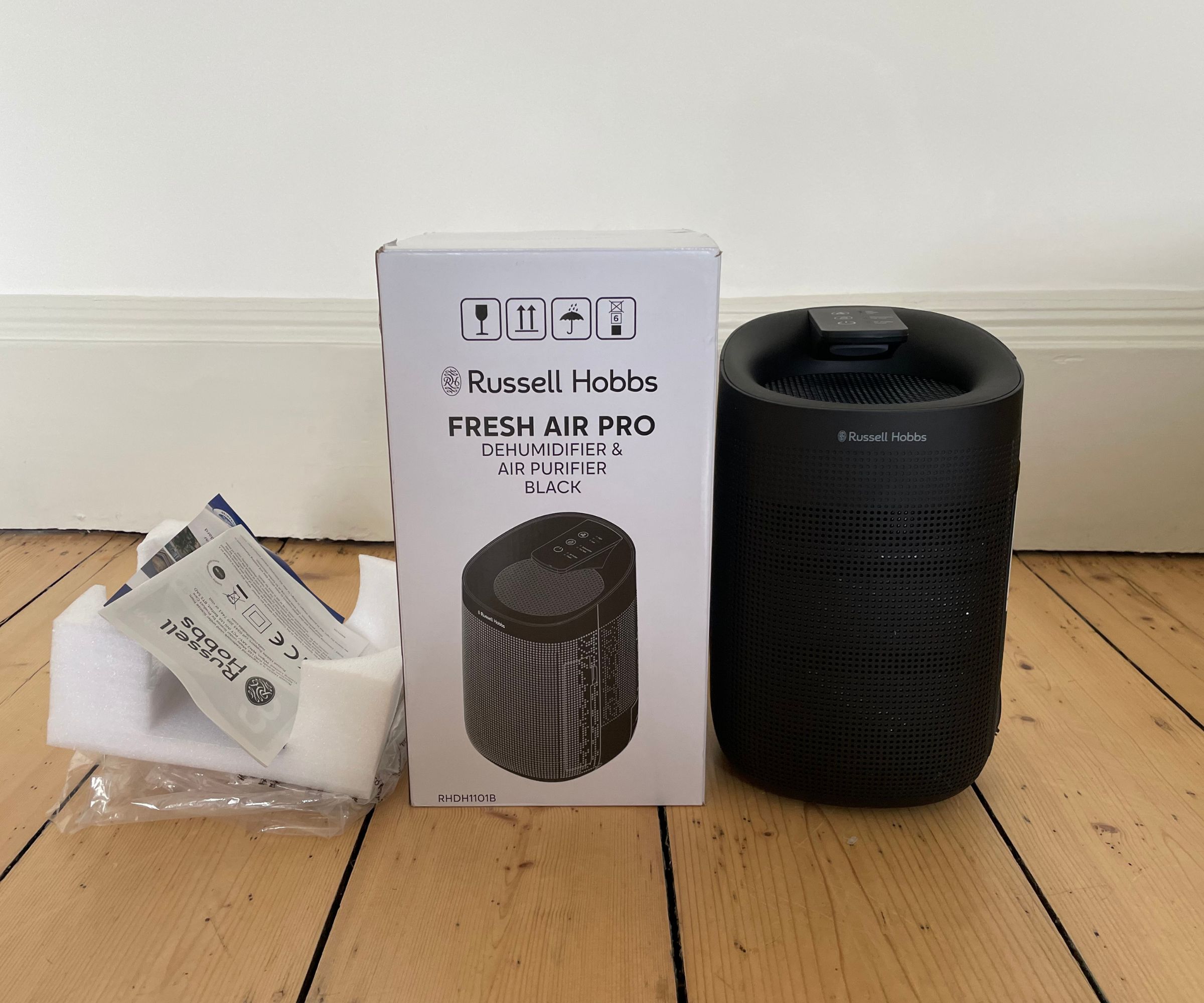
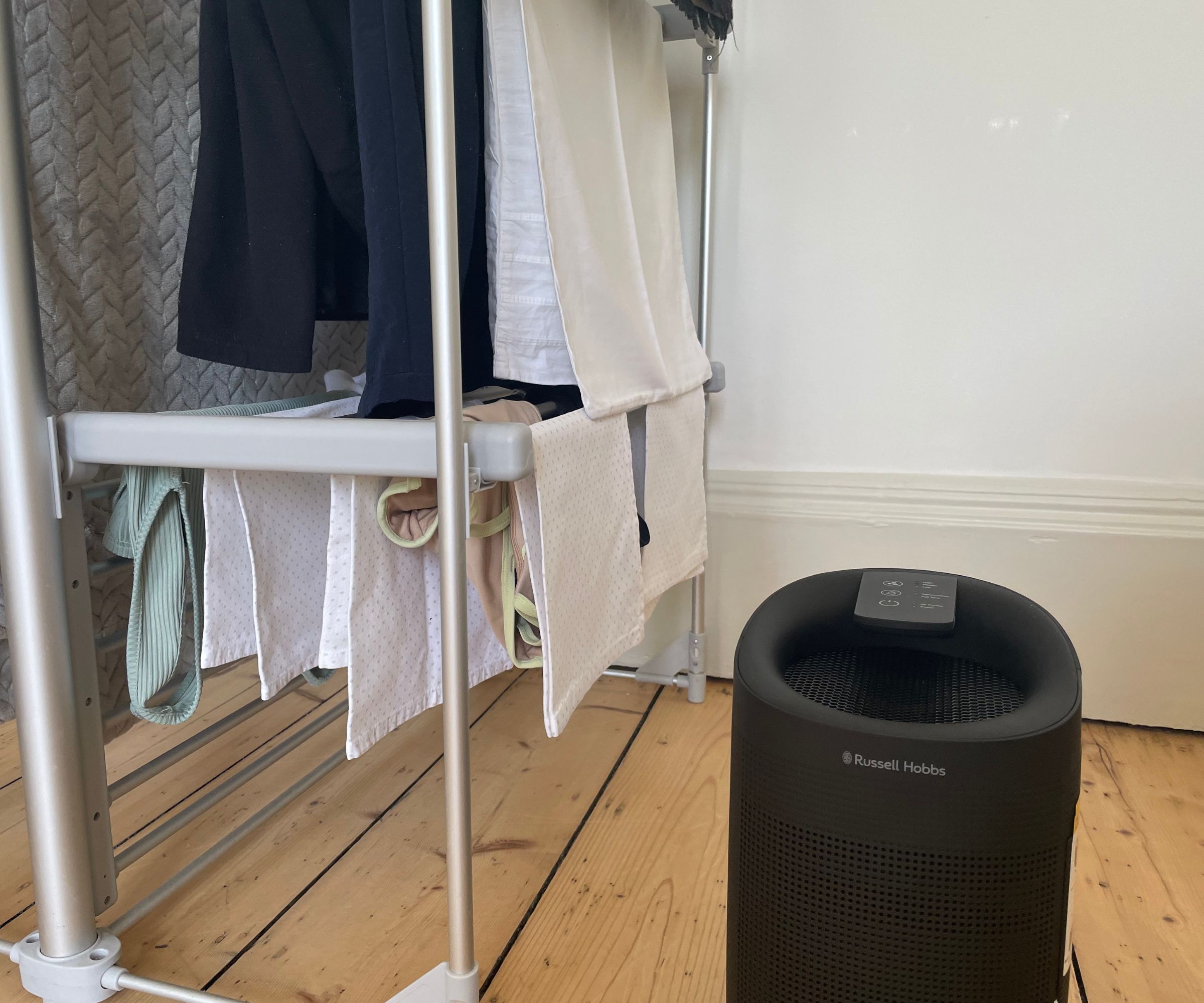
5. Russell Hobbs Fresh Air Pro Compact 2-in-1 Dehumidifier and Air Purifier
Our expert review:
Specifications
Reasons to buy
Reasons to avoid
This stylish dehumidifier is one of the least imposing models I've tested. It’s sleek and contemporary and blended into the background of my home without me even noticing it. It could be mistaken for a speaker, which makes staying and storing this dehumidifier easy. Another boon of its tiny stature is that you can move it around the house easily. I have lots of stairs at home and taking this to each different test (laundry, overnight, the cellar) was by far the nicest. The only downside of the size is that it limits the capacity of the water tank. I think it's a reasonable payoff anyway.
Its control panel is kept simple with three fan speeds – I’d barely glanced at the instructions before it was happily whirring away. As you’d imagine, the more powerful settings are noisier (the top one scored 57 dB on my monitor), but the lowest is still efficient and quiet enough (36 db) to have running in living spaces where you're having conversations or watching TV.
I found the Russell Hobbs worked best in the small and medium-sized rooms of our house where there was general winter dampness, although the cable struggled to reach some higher sockets in my kitchen – it is modest, though not disastrous, at 1.5 metres long. If you have larger rooms, a more severe damp issue, or masses of laundry to get dry, you might need something just a little heftier.
See my full Russell Hobbs Fresh Air Pro Dehumidifier review for more details.
The best dehumidifier for damp areas
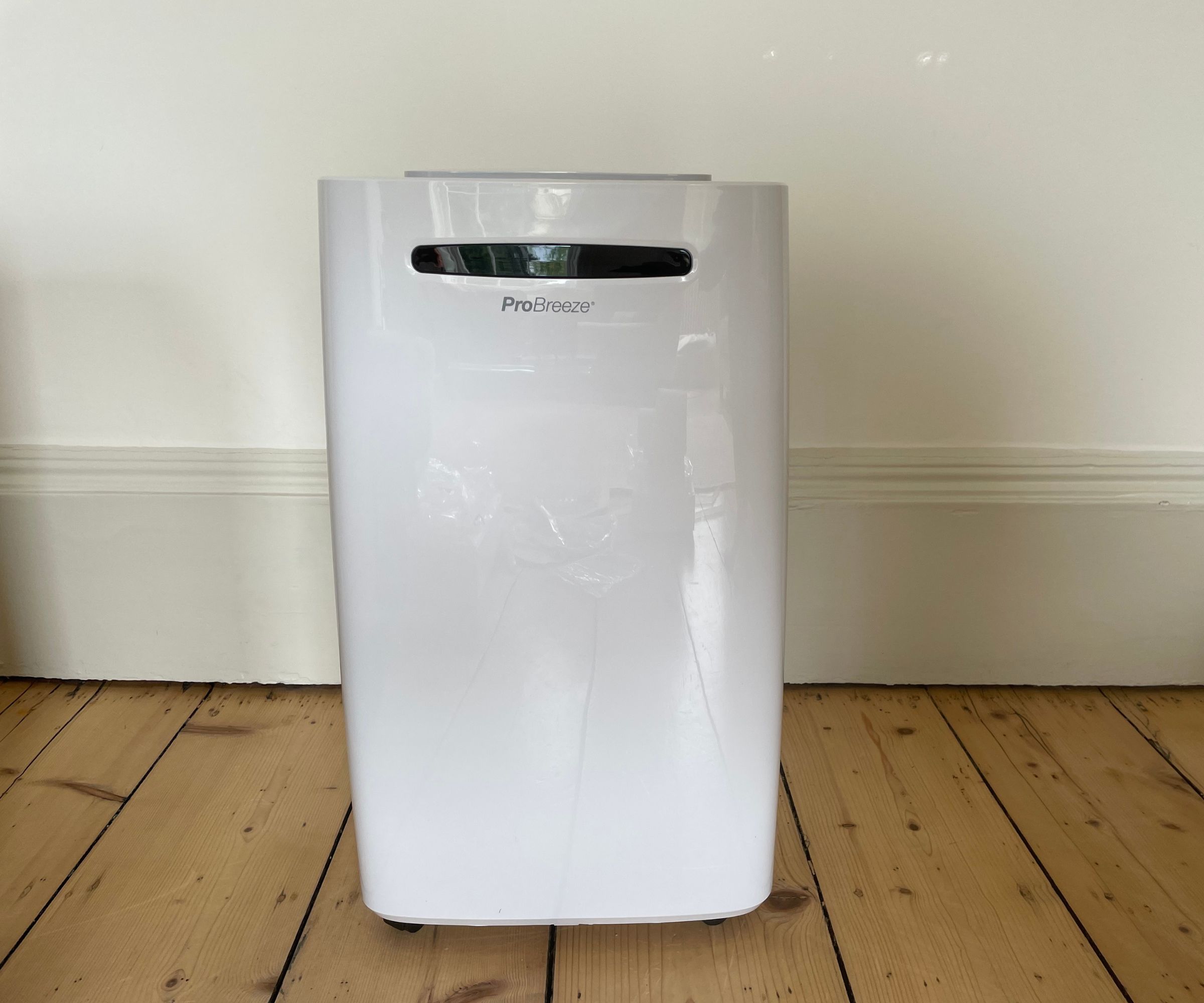

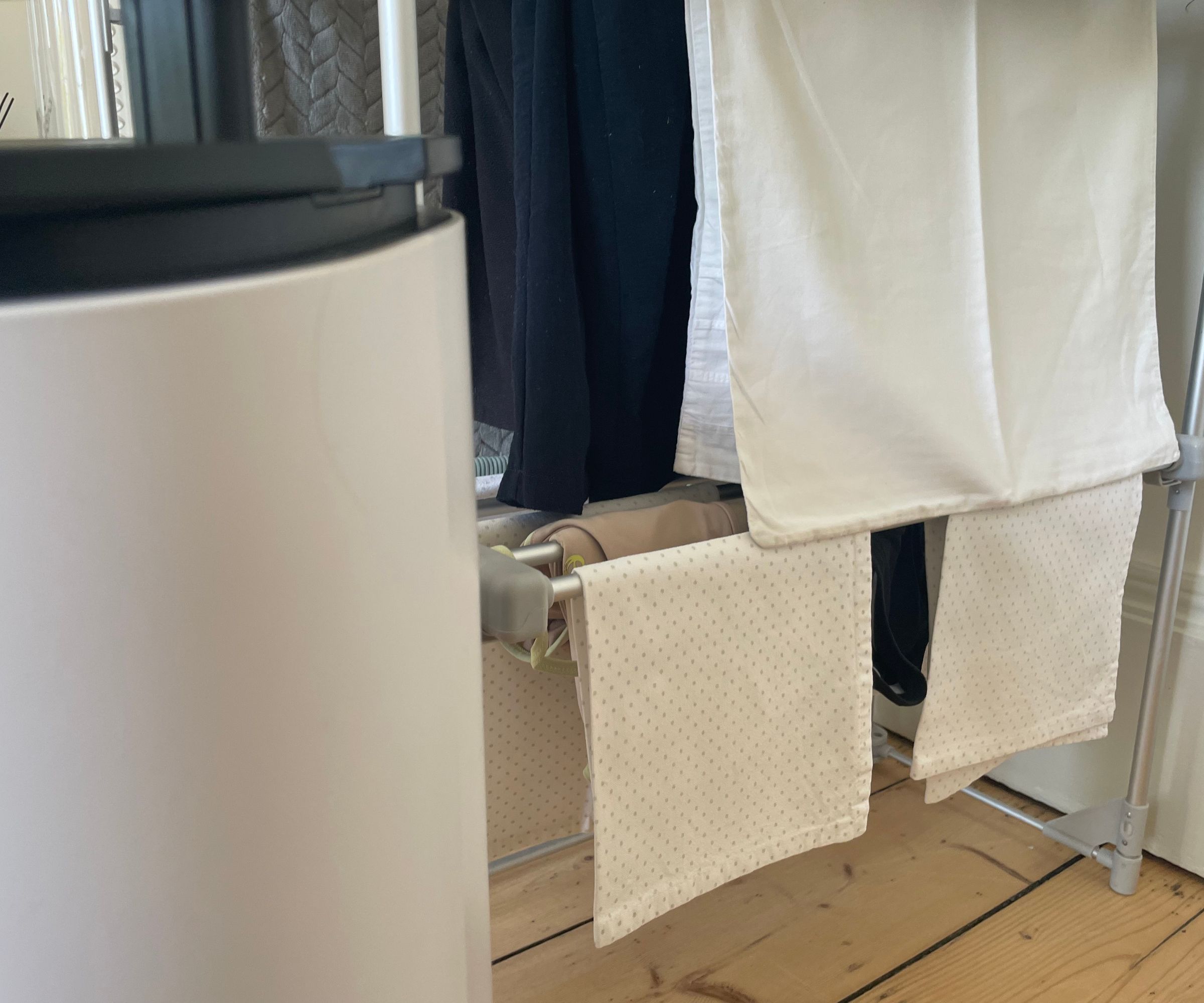


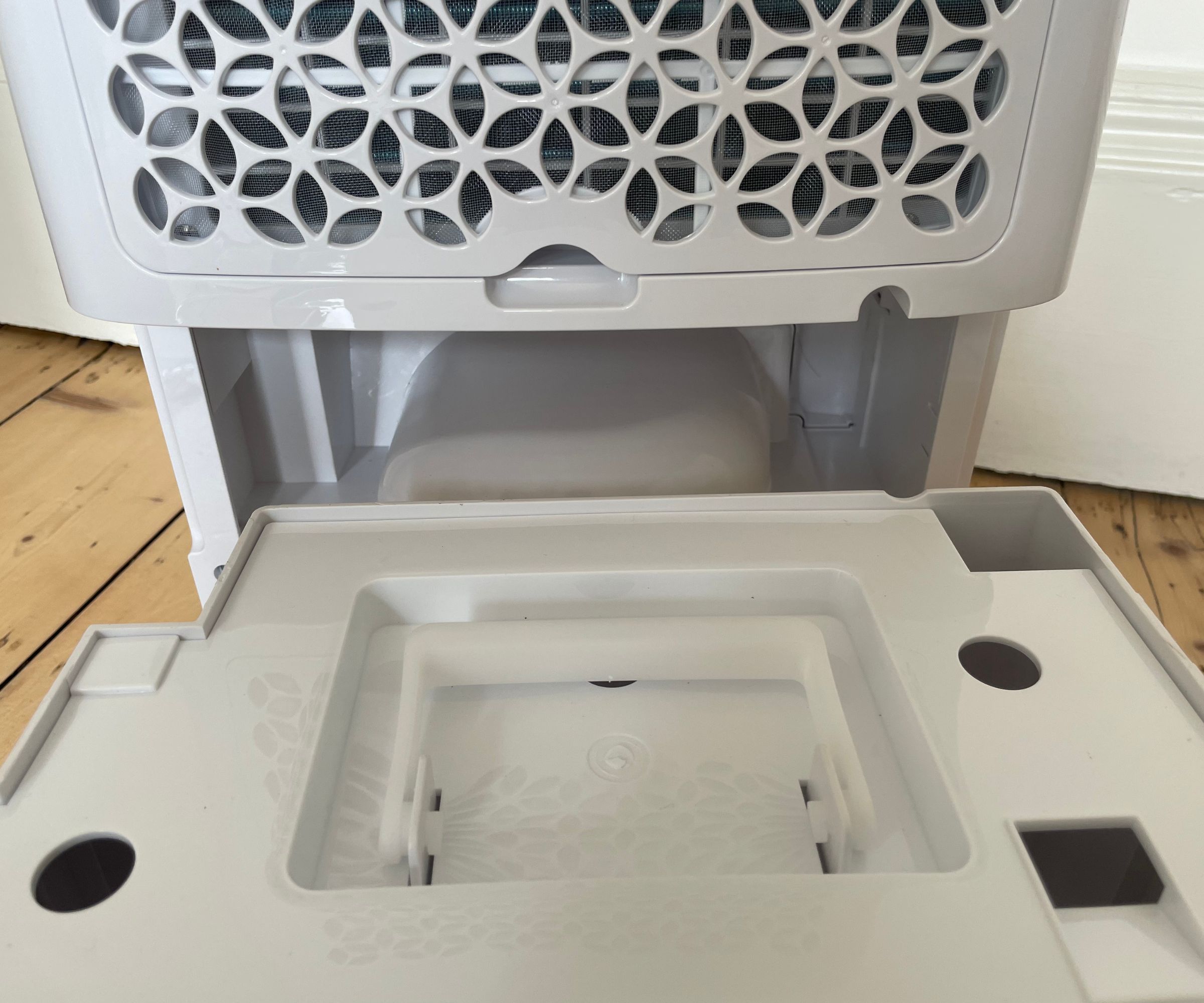


6. ProBreeze 20L Dehumidifier
Our expert review:
Specifications
Reasons to buy
Reasons to avoid
I'd heard all about the Pro Breeze before I even got around to testing it. Roy Jaramillo, the owner of Amazing Air Solutions, recommended them as "a more budget-friendly but effective brand. Their dehumidifiers are really great if you want to maintain humidity levels around 40%, even if you've got tougher tasks to tackle."
Having used it for a month, I can say that this is everything you might expect from a budget-friendly brand. The 5.5-litre tank is about average for domestic dehumidifiers. However, if you attach the hose, it's able to extract 20 litres of moisture a day from the air (the most of any model I tested). There's also an inbuilt sensor that allows you to set your desired air humidity and save on energy (the machine will kick in only when needed to maintain it), a 24-hour timer function, laundry mode, and – our favourite feature of all – a child lock.
It's easy to empty and effective to use, but it's not without some drawbacks. For a start, the menu offers lots of customizable settings, which is great for efficiency and versatility, but means reading those instructions is a must. It is also the bulkiest model I tested – both in terms of size and weight. It was tricky for me to lift up a set of stairs, but it does have a fold-out handle and wheels on the bottom. If no stairs are involved, moving it from room to room was a piece of cake. The generous cord length also helped up its convenience too.
See my full Probreeze 20L Dehumidifier review for more details.
The best value dehumidifier
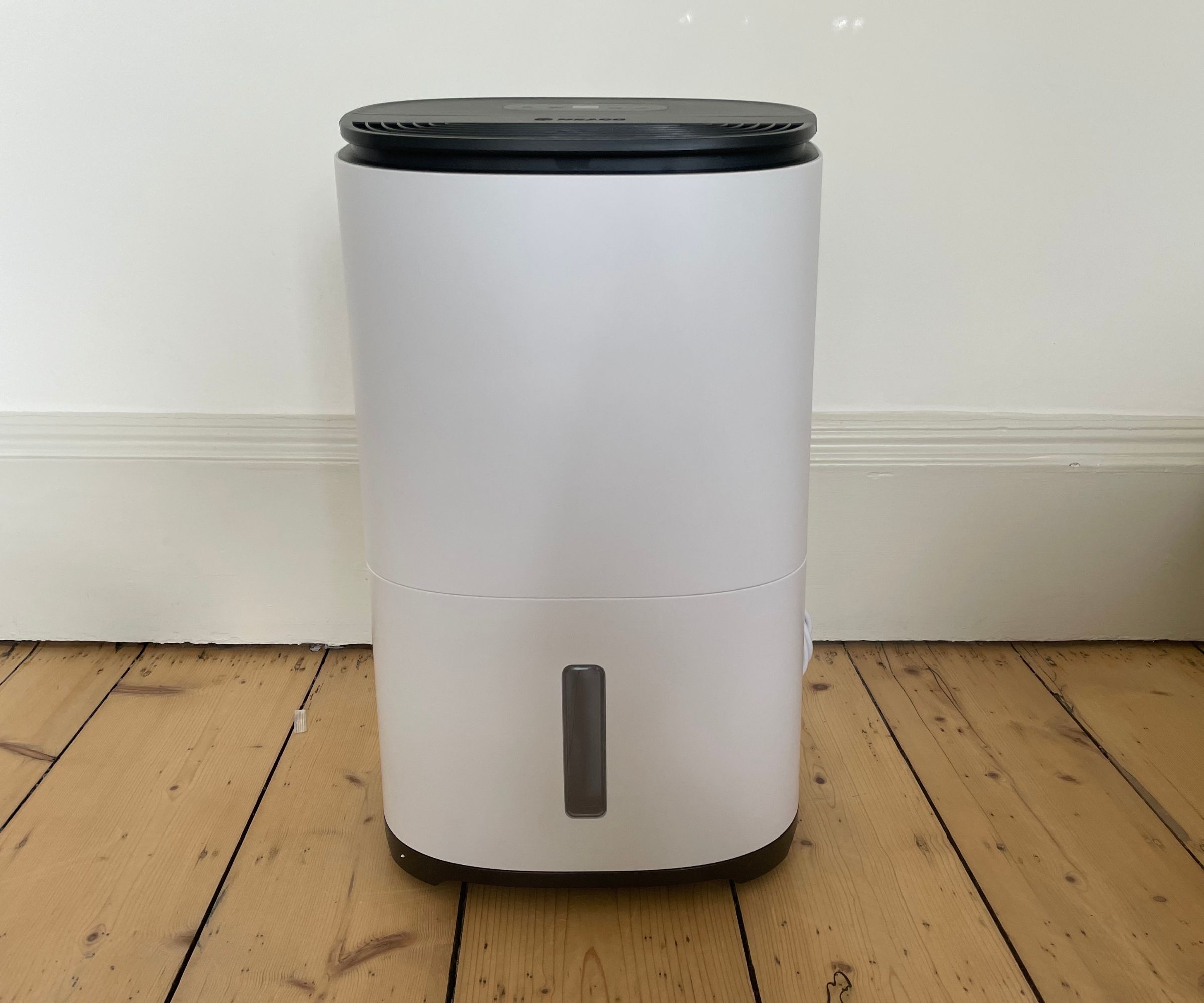
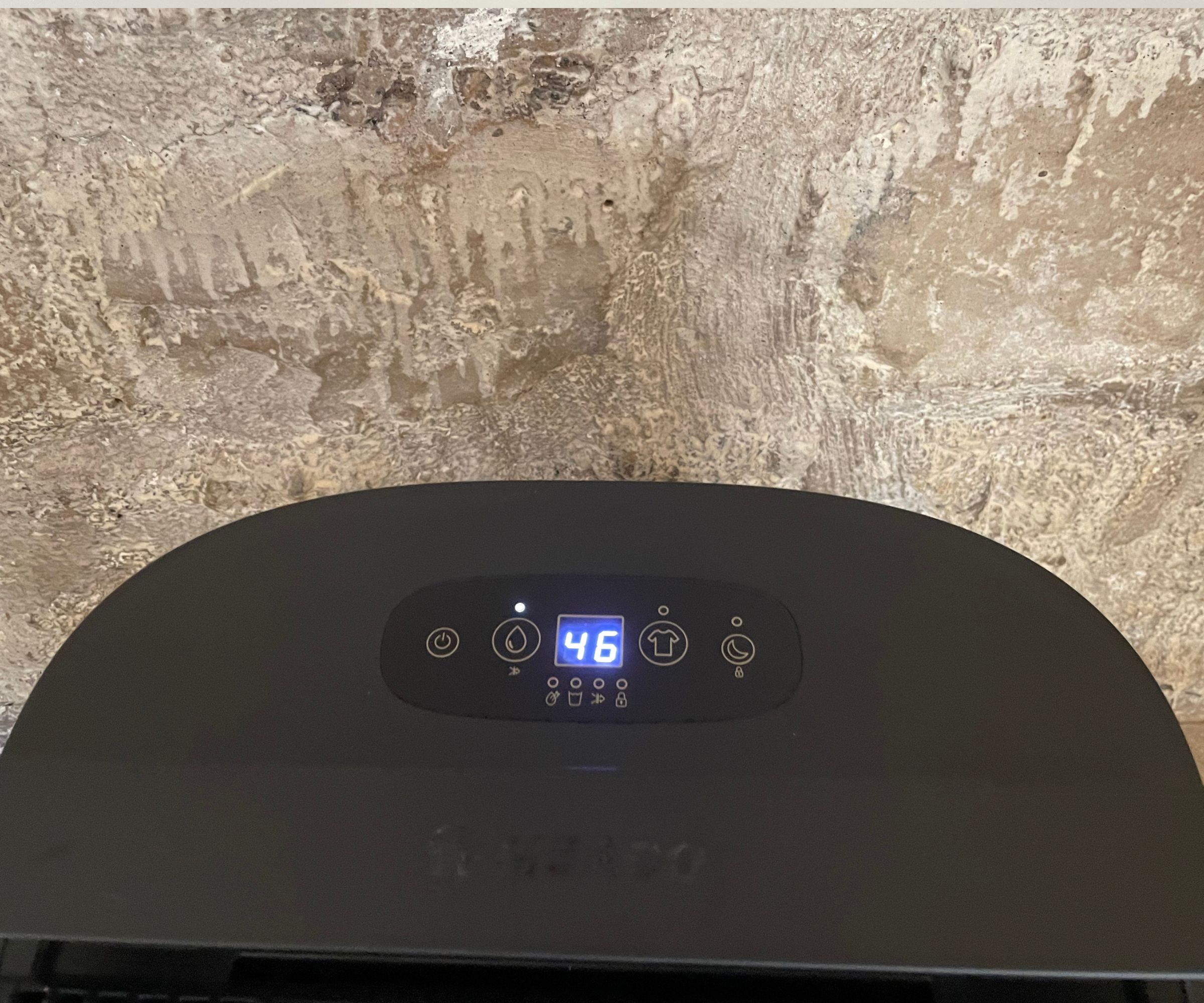
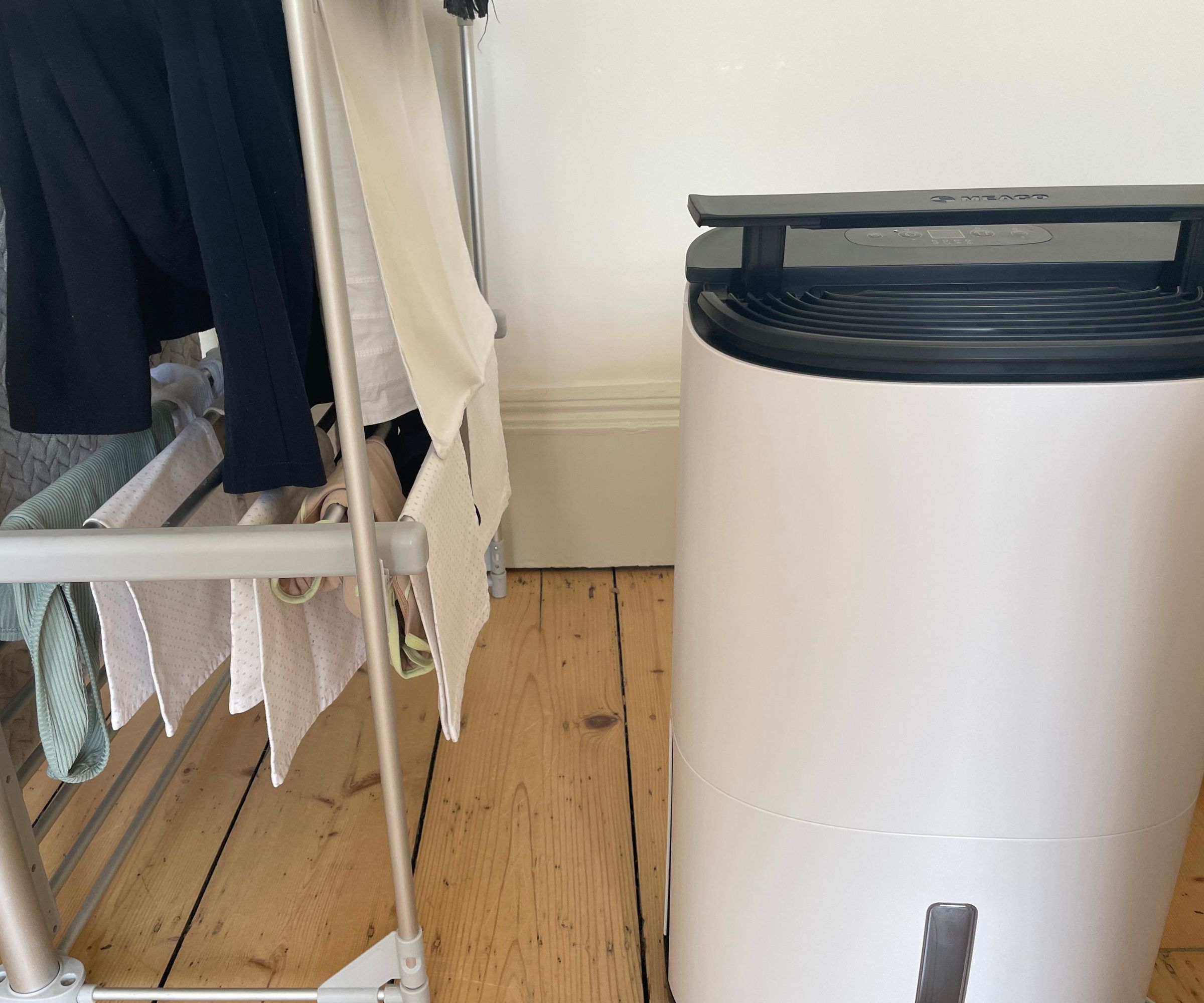
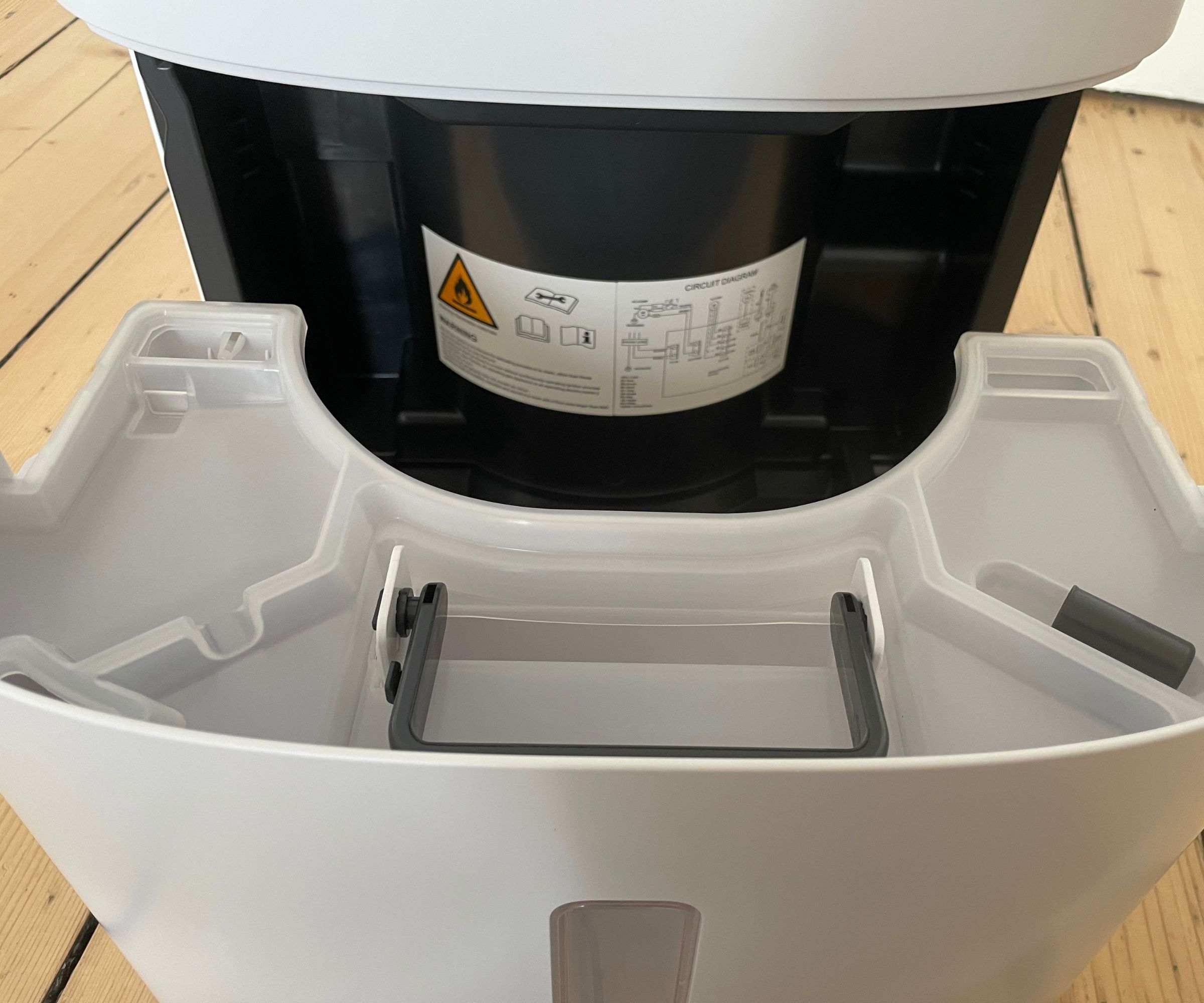
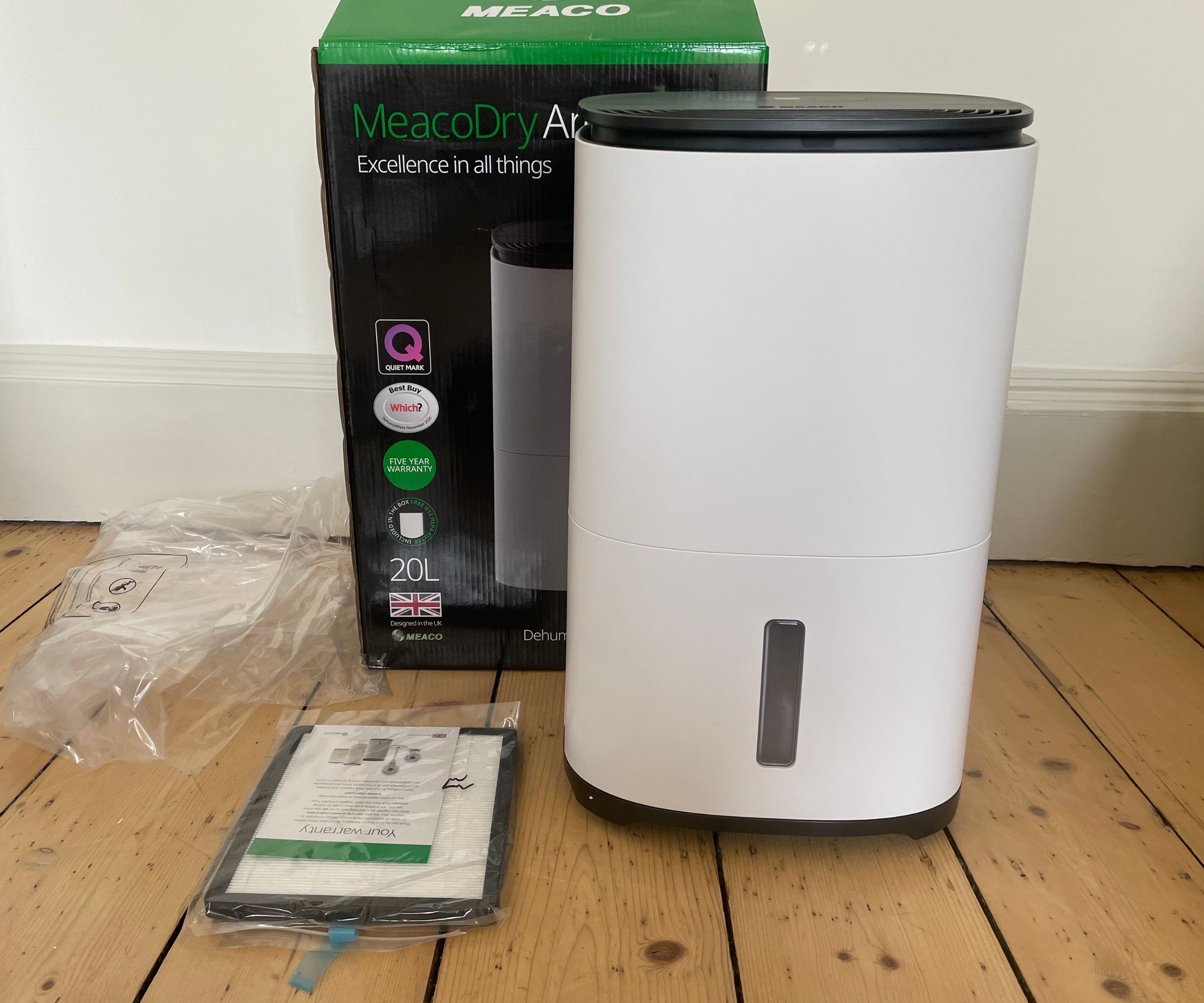
Specifications
Reasons to buy
Reasons to avoid
I’m not sponsored by Meaco – they just make excellent dehumidifiers. Their models appear several times in this guide because they’re genuinely versatile and well-engineered, likely thanks to their experience in both commercial and domestic markets.
The MeacoDry Arete One is one of the most popular dehumidifiers around, and for good reason. I’ve used the 20L model at home for months and can vouch for its speed, efficiency, and reasonable price. It’s available in 10L or 20L sizes – most homes will only need the 10L, which Homes & Interiors expert Amy Cutmore tested. She found it lightweight, easy to use, and stylish: "the matte off-white and charcoal finish gives it a Scandi look that’s as handsome as dehumidifiers get."
But it's not just good-looking. Amy removed nearly 10L of water in 24 hours; I saw humidity in my damp basement drop by 20% overnight. Even better, it runs quietly. We both found its night mode – which dims lights, silences buttons, and lowers the fan – genuinely sleep-friendly.
It can handle rooms up to 42m² and has thoughtful features like a pop-up handle and cord tidy. It performed brilliantly for laundry and general damp control, though as a refrigerant model, it may not suit very cold spaces like garages.
See Amy's full MeacoDry Arete One 10L dehumidifier review and my review for the MeacoDry 20L if you need more capacity.
The best dehumidifier for energy efficiency
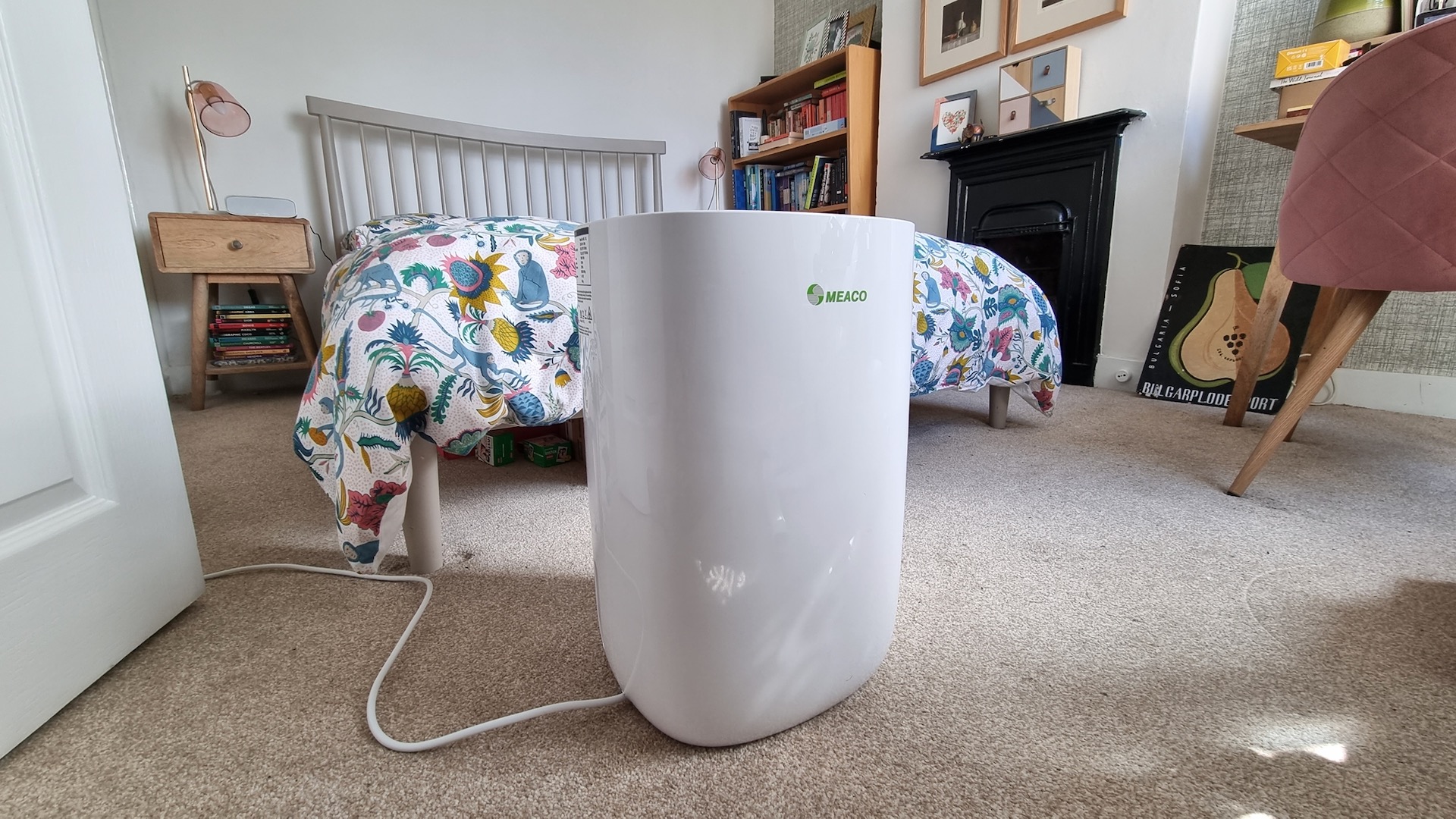

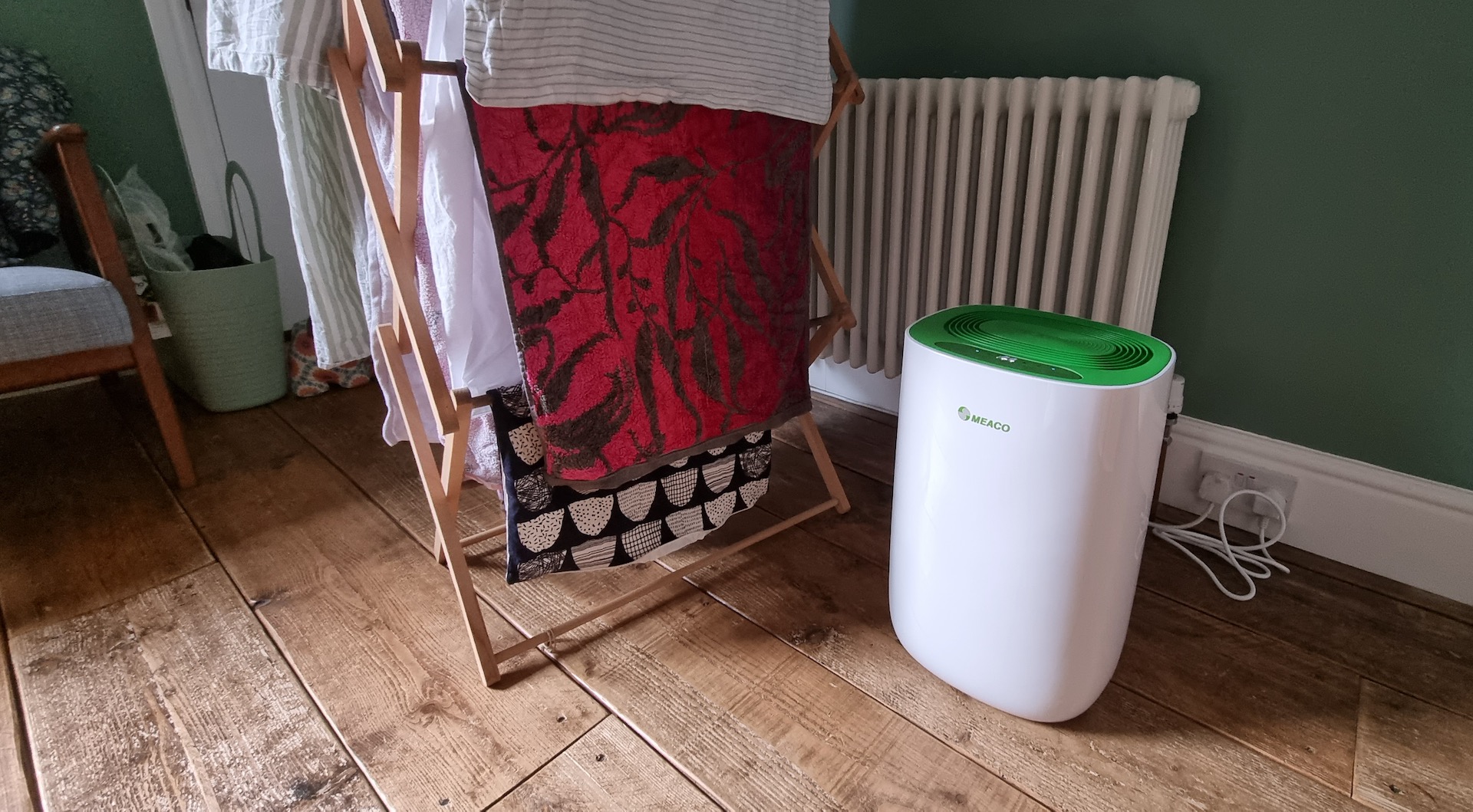
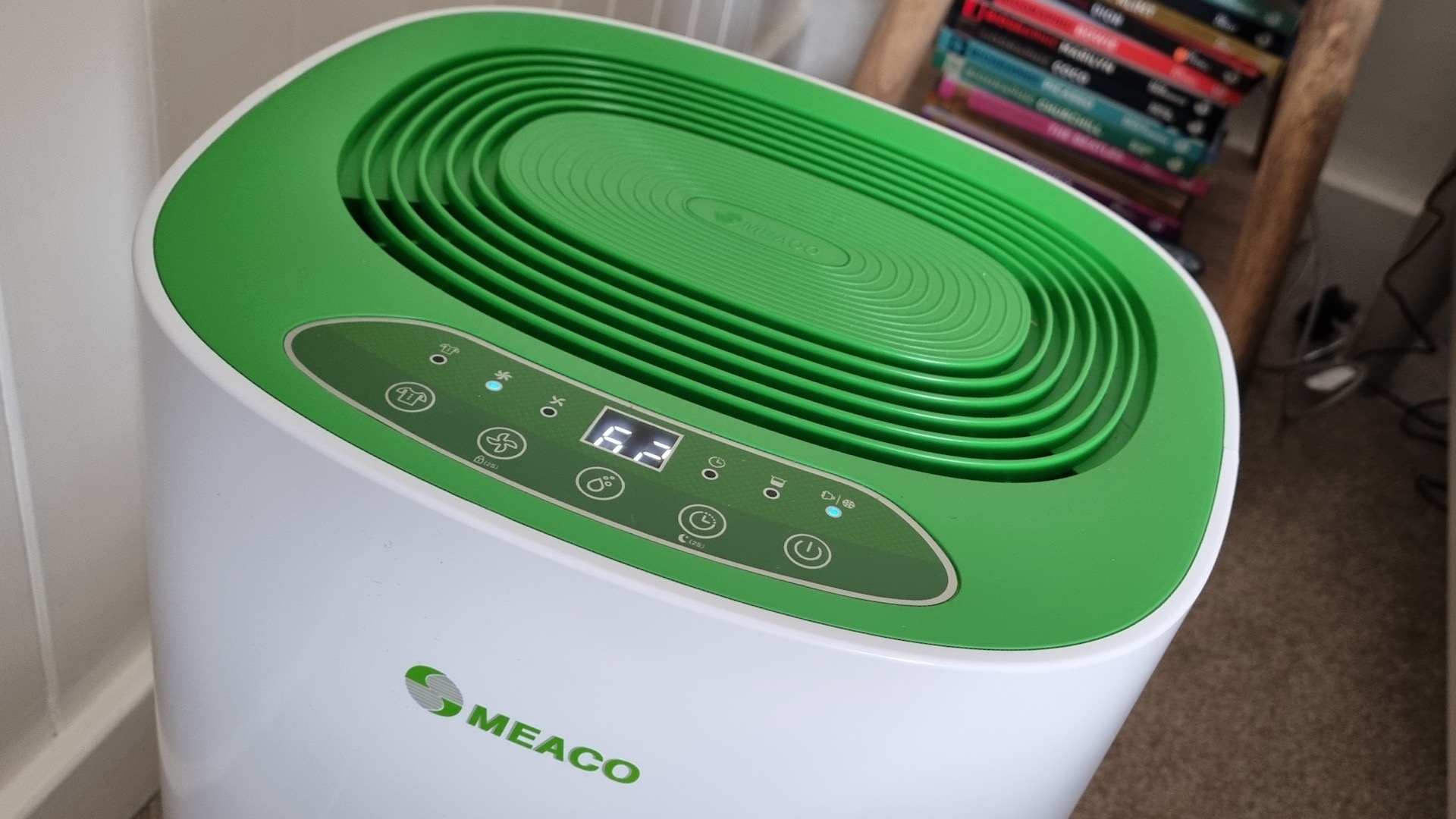
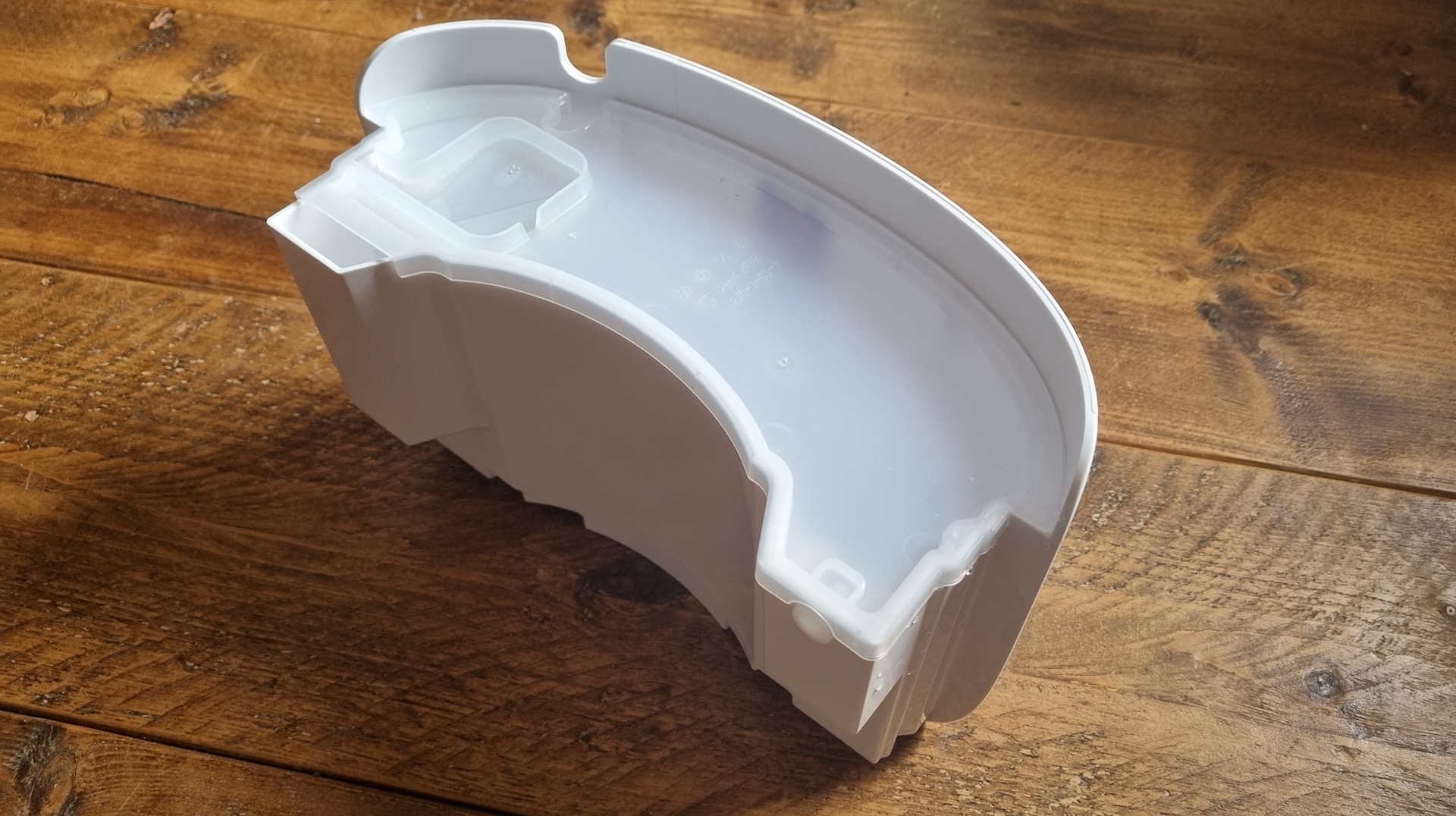
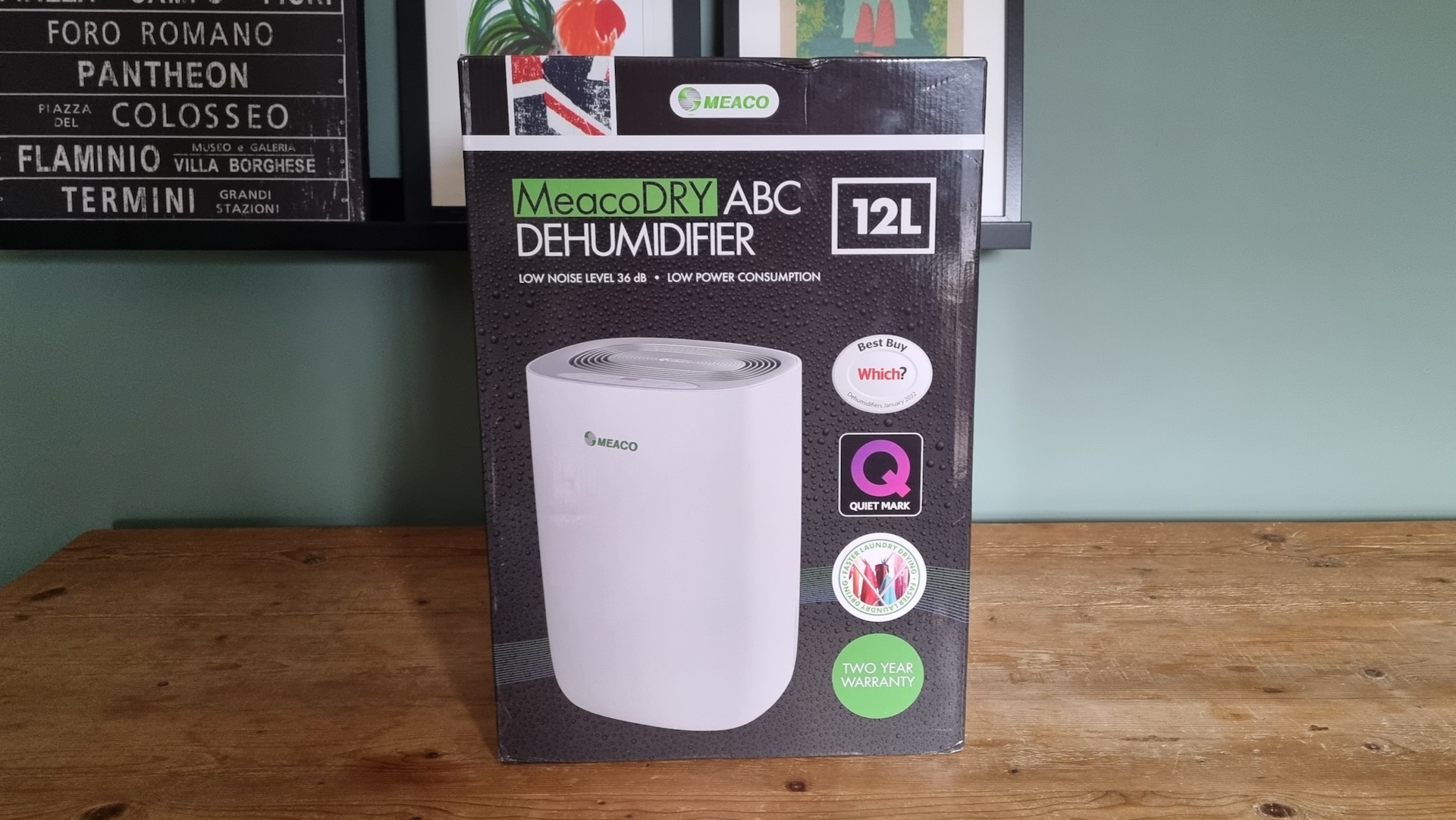
8. MeacoDry ABC 12L
Our expert review:
Specifications
Reasons to buy
Reasons to avoid
MeacoDry is a big name in the dehumidifier world, so it's no surprise that they make the best dehumidifier for laundry (as well as the best dehumidifier overall). Amy, our expert tester, described this as "the perfect size for a three-bedroom home which has light condensation." It didn't solve the damp issues in the room but made some considerable headway towards clearing it.
Where the ABC 12L stands out is as an indoor dryer. Amy tried drying clothes which would normally need 14-36 hours and found that the very same clothes were iron dry within six hours. Proof that the specialised laundry setting more than delivers. Plus, there's an auto-off function, so that when the tank is full the Meaco won't keep running and draining your energy (and your wallet).
Amy offered a few words of warning with respect to the MeacoDry: "it was impressive and energy-efficient, but I also found it pretty cumbersome and heavy. I also found that it's much too loud to use in your bedroom. On the highest fan setting, I recorded 59 dB of noise. On the lower setting, the noise was comparable to my dishwasher or a low conversation."
Read Amy's full MeacoDry ABC 12L review to find out more.
Best dehumidifier under £50
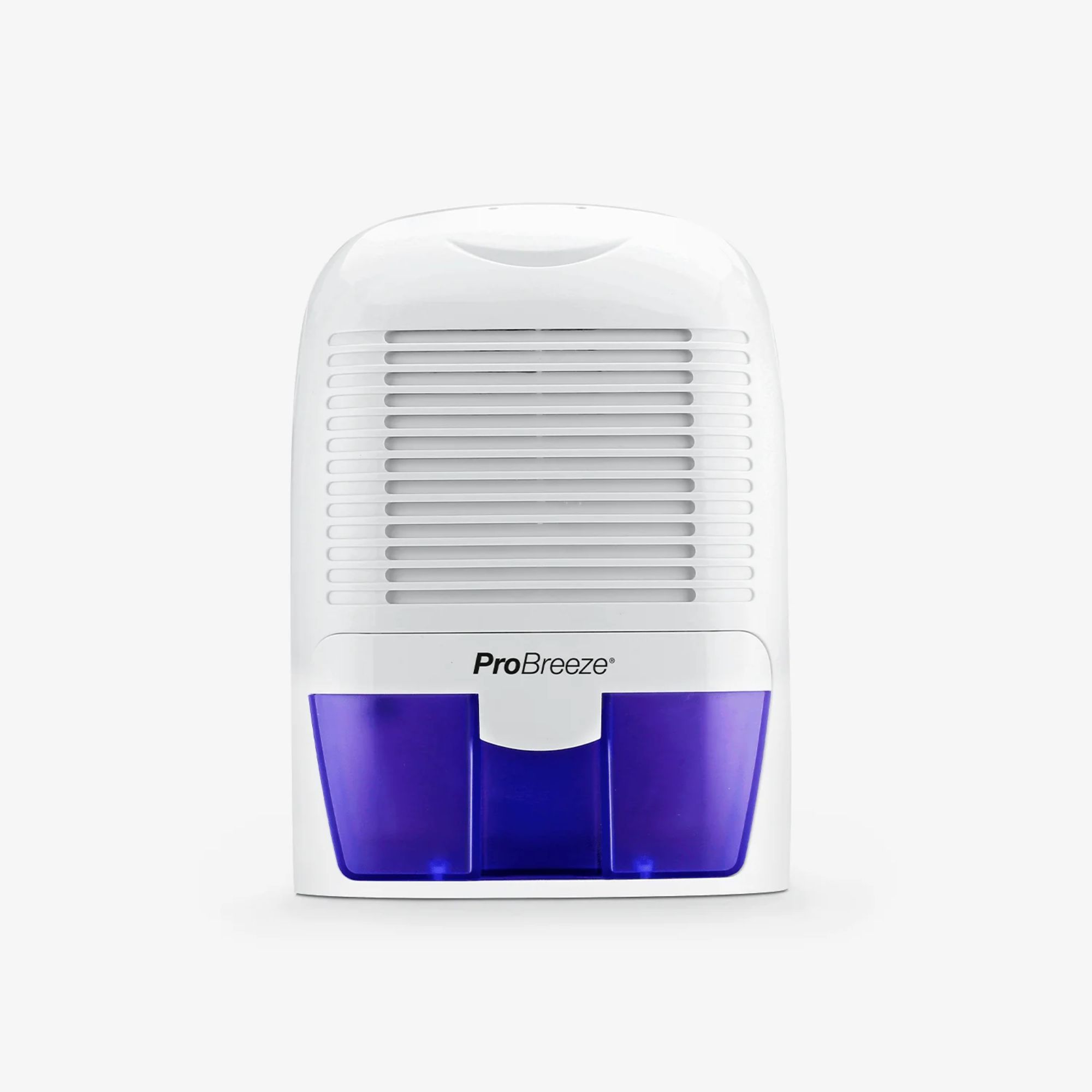
This is the ProBreeze Mini Dehumidifier. We are testing and reviewing it at the moment, so watch this space
9. ProBreeze 1500ml Mini Dehumidifier
Our expert review:
Specifications
Reasons to buy
Reasons to avoid
I don't always recommend going for the cheaper dehumidifiers on the market, but this is one of the few products that is probably worth more than the retail price. It's compact, efficient, and extremely quiet. For less than £50, it's pretty perfect.
If I was to sit this running alongside the MeacoDry Arete One (my top pick) it would, of course, not quite compare. The capacity is really good for its size, but it's not much compared to the average, 10L model. If you see this dehumidifier for what it is – a basic model that's designed to work in rooms up to 2200 cubic feet (220 sq. ft) – you'll see that it's amazing at what it promises to do.
What's even better than the small footprint and even smaller retail price is that this costs just 1p per hour to run. Given that it's effective at extracting moisture from small bathrooms and laundry rooms, it's a bargain. My plan is to keep this running in my wardrobe, which has developed an unforeseen damp issue. It seems to be doing the job so far, but I'll keep you updated.
So, it's simple, affordable, and compact, why shouldn't we all buy it? The extraction rate is great for small spaces, but it's also pretty basic. It's not ready to tackle any serious issues (don't stick it in a damp basement, for example). Other than that, this tiny dehumidifier lives up to ProBreeze's big reputation.
Our experts are in the process of testing it and we'll give you a full review as soon as we're finished using it.
How we tested the best dehumidifiers

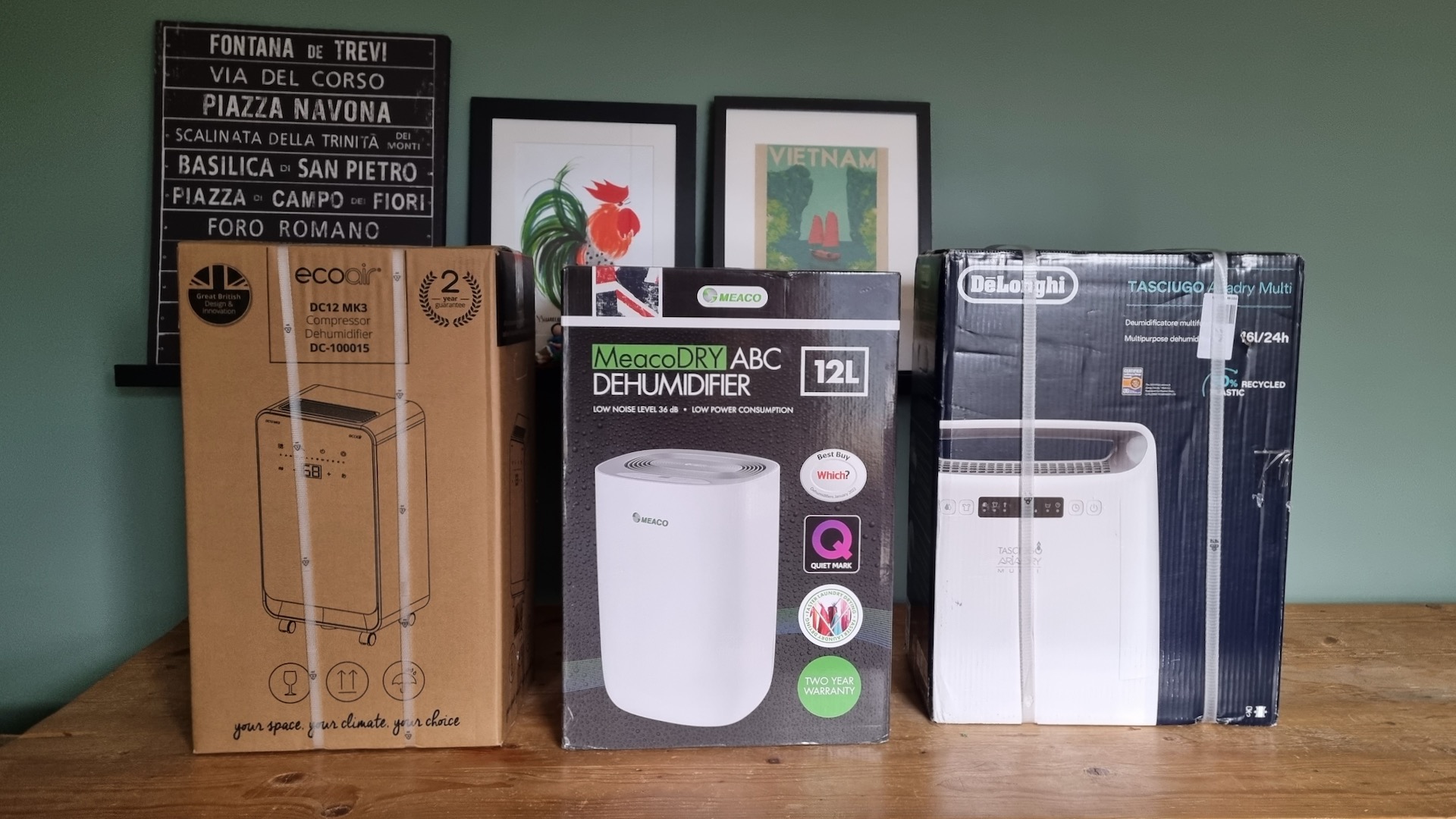
There are lots of dehumidifiers out there, so finding the perfect one for you can prove tricky. I start all of our testing by researching hundreds of models from popular and trusted brands, narrowing the list based on reputation, customer reviews, and expert opinions. From there, I created a shortlist of top-rated units to test in real-life scenarios.
Each dehumidifier went through a series of tests across a 72-hour period. I used a hygrometer to monitor how quickly and effectively each model reduced humidity levels in different rooms:
- Small bathroom (approx. 4m²) after a shower (starting humidity: 80%+)
- Medium-sized bedroom (approx. 12m²) with windows closed (starting humidity: 65–70%)
- Laundry drying test, running the dehumidifier alongside an indoor clothes rack
- Cool, damp basement space, to test performance in lower temperatures
We tracked how much water each model extracted, how long it took to make a difference, and how much energy it used with a smart plug energy monitor. We also considered:
- Ease of use: How easy each dehumidifier was to set up. Did it come with instructions, and how long did it take to read and work out how to use it?
- Features and functions: Did it only offer different speed modes or a laundry setting? Some come with laundry modes, timers, and humidity sensors.
- Value for money: Is it worth the price tag, or could you get an equal experience for less money? Do the more expensive models offer a better experience?
- Maintenance: you'll want to know how to clean a dehumidifier to keep it working well our reviews cover emptying the tank, cleaning the filter, and storing the dehumidifier away.
Although our top dehumidifiers are listed above, we're constantly assessing and testing the latest releases to make sure we're recommending the very top products on the market. Read our full explainer of how we test dehumidifiers for more about our in-depth process.
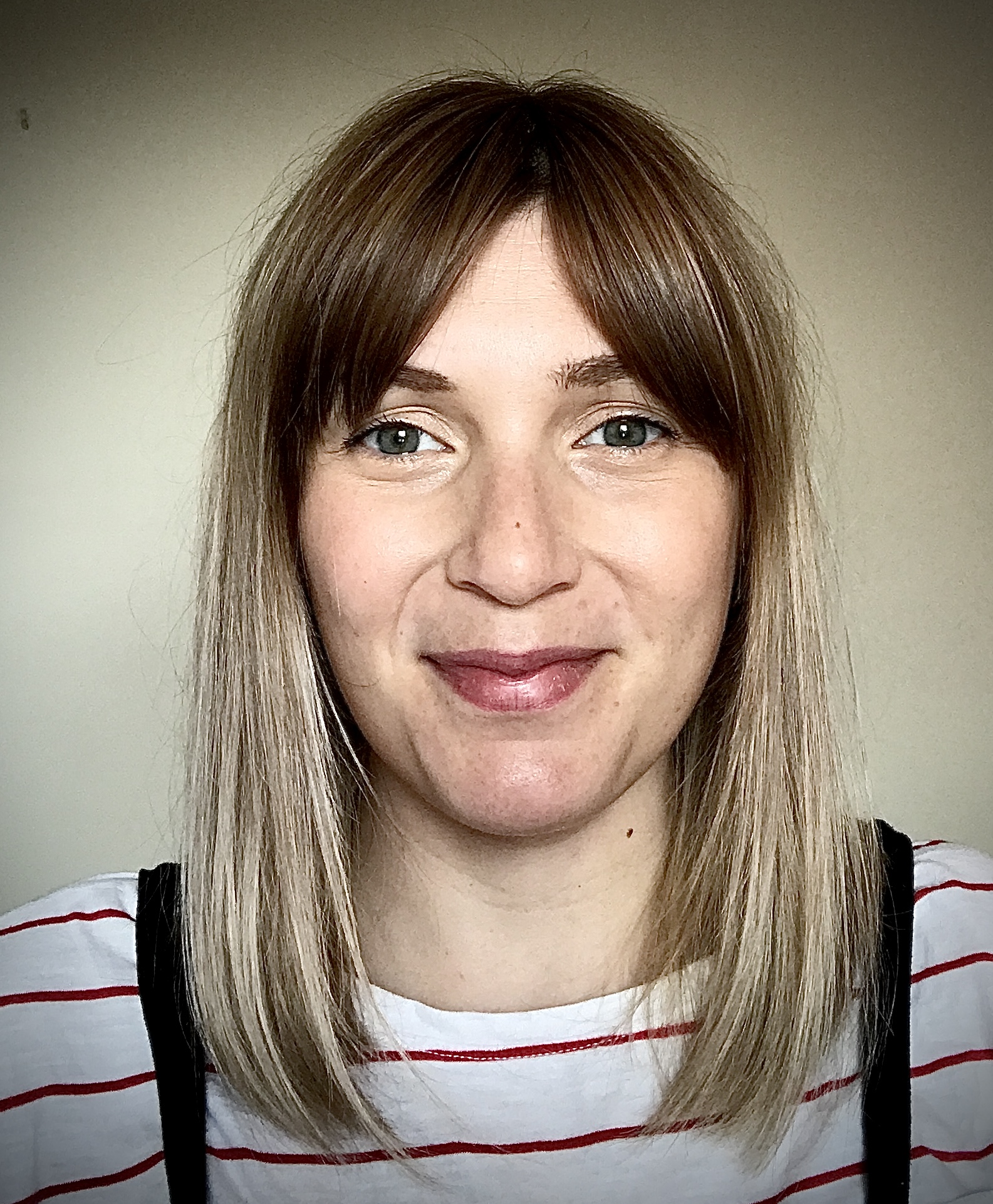
Jessica works with brands ranging from WIRED and BBC Food to The Independent, Ideal Home and Stylist. She reviewed the Meaco MeacoDry Arete One 10L Dehumidifier, one of the top-rated models in our guide, from her own home.

Amy is a PPA award-winning Digital Editor who has been working in the wonderful world of interiors for over 16 years. She's tested plenty of dehumidifiers in her time and is full of tips that'll help you to maximise your dehumidifier's performance (as well as insight on how to pick up a good deal).
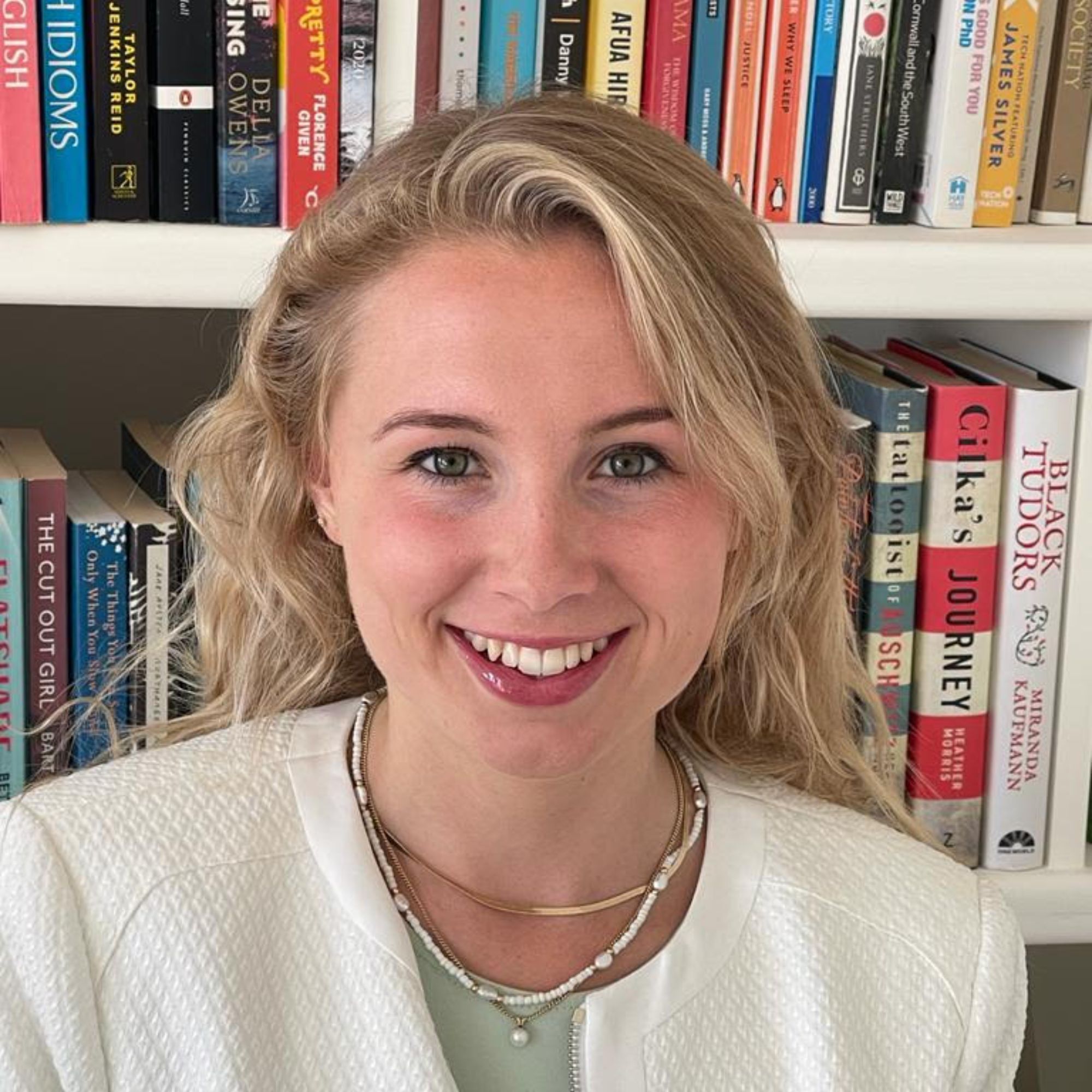
Laura is woman&home's eCommerce editor, in charge of testing and reviewing. She's interviewed the design team from brands, such as Shark and Meaco, so knows the background of all these models. She also lives in a perpetually damp house (the cellar quite literally drips), so puts these dehumidifiers through their paces.
FAQs

This is the Probreeze dehumidifier in Amy's home, drying laundry
What should I consider when buying a dehumidifier?
So why should you buy a dehumidifier? As well as the environment in which you plan to use your dehumidifier, there are several other things to consider before you invest.
For instance, will it stay in the same spot, or do you intend to move it from room to room? Some models are far more portable than others, so pay close attention to the size and weight of the appliance.
And think about where it’ll be used and stored too; you don’t want to be tripping over it constantly if it’s a heftier model or have nowhere to pack it away in the summer months when you may not need it.
Size isn’t the only potentially imposing characteristic of a dehumidifier – they all make noise while operating. If it’s going to be used in a living space, consider how loud of a hum or whirr you can realistically live with.
While dehumidifiers can help keep energy bills down by negating the need to dial up the heating or succumb to the tumble dryer, there will, inevitably, be an initial outlay. So when you’re deciding how much to spend on a dehumidifier, be prepared to play the long game. Net savings will amass gradually over time and use – so if you don’t think you’ll realistically rely on your new appliance very often or plan to still use a tumble dryer, a smaller, more affordable dehumidifier might be the best value for you.
Tony Abate, a certified environmentalist and CTO at AtmosAir Solutions, says 'the unit should operate with a humidistat too, so you can set your desired humidity (around 40% is ideal) and the unit will automatically operate when dehumidification is needed. It's also helpful if your unit has a removable container connected to an auto cutoff so that it's easy to empty and won't overflow.'
It’s also important to try and work out where your dampness is coming from, too. Modern dehumidifiers have different modes so, for instance, if drying endless loads of laundry (we can relate) is the cause of all that excess moisture, looking for a model that has a specially designed laundry mode is wise.
How much should I spend on a dehumidifier?
While there are some exceptions, generally in life you get what you pay for. During our various rounds of testing, there was the odd model which stood out for offering good value alongside high performance – like the Russell Hobbs dehumidifier above – but it’s worth keeping in mind that cheaper versions are typically smaller and less robust, meaning they lend themselves to individual rooms or spaces rather than whole apartments or houses.
Depending on your set-up, you might want to keep costs down and just use a neater dehumidifier in a defined area like a cupboard or bathroom. For larger or busy households, where you might want the machine to help with drying clothes and keeping multiple spaces dry, then we’d guide you in the direction of spending a little extra to get a solid performer that will both make a noticeable difference and be able to handle the pace for years to come.
Check out the latest dehumidifier deals to make that investment more worthwhile.
How do dehumidifiers work?
When trying to understand how a dehumidifier works remember there are two main types of dehumidifiers: compressor (or refrigerant) and desiccant. These both remove moisture from the air using different methods and are designed for different environments.
Compressor dehumidifiers (which you might also find labelled as refrigerant), work by sucking in air with a fan and passing it over a cold surface (think metal coils or plates). This creates condensation inside the unit, which then drips into the water tank. This method is reliant on the air that’s drawn in being warmer than the cold surface inside, otherwise, condensation won’t form and the liquid can’t be extracted. Compressors, then, are popular for warmer spaces where central heating is used – think bedrooms and living rooms.
Meanwhile, desiccant dehumidifiers capture moisture using an absorbent material. The liquid that’s been sucked up then trickles down into the tank. This type of appliance doesn’t rely on the air being a particular temperature, meaning they’re great for colder spaces that are perhaps not well insulated or heated, like conservatories, basements, and garages. They do tend to use more energy than compressor types, though.
Do dehumidifiers save money?
A dehumidifier is the most effective way to reduce excess moisture in your home. If you don't have a dehumidifier, you're probably exercising a few inefficient, inconvenient options at the moment.
Lots of people try ventilating there home, which can be a great solution if you're suffering from musty humidity. However, if it's cold outside, cracking your windows isn’t a tempting prospect as you’d end up losing precious heat and likely pushing up your energy bills. Similarly, having cold showers and during your clothes outside aren't always practical when the weather is unpredictable, cold, and damp.
Speaking of heat, cranking that thermostat up helps to dry out damp too, but with the recent price hikes for gas, this is far less of an affordable option than it once was – how much it costs to run a dehumidifier being a more affordable option.
If most of your dampness comes from airing laundry, you might also be thinking about investing in a tumble dryer – although these start at around the same price as a dehumidifier and it’s widely agreed they cost much more to run. But there are alternative ways to dry laundry, one of which is to use a dehumidifier to help dry clothes.
So, especially when compared to other methods of damp prevention and treatment, dehumidifiers are sound investments. Plus if you manage to secure a deal you can pick up one the best for less.
Do you run a dehumidifier in the winter?
Whether or not you need to use a dehumidifier in the winter really depends on the climate you’re living in. If it gets cool and damp then it can be useful to run one for a little while each day, helping to maintain a healthy average humidity level of around 30-50% in your environment. Here are some ways running a dehumidifier in winter can be beneficial:
- Banish window condensation caused by cool outdoor temperatures
- Keeping humidity levels healthy will help your heating systems to run efficiently
- Help your laundry to dry quickly
Do dehumidifiers use a lot of electricity?
We've already covered a fair amount of this in our answer for 'do dehumidifiers save money?'. If you want the short answer, yes, they probably do.
Speaking generally, dehumidifiers use 300-1,500 watts of electricity per hour. Of course, this will depend on the size, capacity, energy efficiency, and usage of your dehumidifier. If this is something you're conscious of, check the wattage rating of the dehumidifier you're interested in and multiply it by the number of hours you'll need your dehumidifier to operate for each day.
Most new models come with energy-saving features, which includes auto-shiyt off and efficient compressor technology. You can also give your dehumidifier a helping hand, by looking for the source of your humidity, ventilating your room, and insulating your space well.
The alternative ways in which you'll either dry clothes or get rid of humidity in your room will end up pushing up your energy bills. You'll either have to up the temperature on your thermostat; invest in a good dryer; and open the windows inside (losing heat from your home).
What size dehumidifier do I need?
Choosing the right size of dehumidifier for your room will depend on several factors, namely the size of your room, the level of humidity, and the airflow and temperature of your room.
If you're trying to work out which one you need, start by calculating the square footage of the area that you want to dehumidify. Most models (and our reviews) will give you guidance on what sort of area they can cover.
If you want to assess the levels of humidity in your room, you can use a hygrometer to get a reading of your room. Then, look at the capacity of your appliance. A small capacity dehumidifier will be able to remove 30-40 pints per day and larger ones will be able to handle 70 pints or more.
How do I clean a filter on a dehumidifier?
If you've chosen to invest in one of the best dehumidifiers on the market, you'll want to keep it clean. We've broken down the process into five easy steps for cleaning a dehumidifier.
Cleaning the filter specifically will depend on the model that you choose. Essentially, your goal is to remove all the dust and debris from inside, so that air can flow through freely. Experts recommend carefully vacuuming or using a warm, damp cloth to wipe dirt away. Once this is done, dry the filter and put it back into the dehumidifier.
If you have a small model, that is difficult to clean, some experts recommend using a toothbrush with small bristles that can reach hard-to-clean areas. Experts will also note that dual-function dehumidifiers come with HEPA filters which will need to be replaced every six months.
Sign up to our free daily email for the latest royal and entertainment news, interesting opinion, expert advice on styling and beauty trends, and no-nonsense guides to the health and wellness questions you want answered.

Laura is woman&home's eCommerce editor, in charge of testing, reviewing and creating buying guides for the Homes section, so you'll usually see her testing everything from the best dehumidifiers to sizing up the latest Le Cruset pot. Previously, she was eCommerce editor at Homes & Gardens magazine, where she specialised in covering coffee and product content, looking for pieces tailored for timelessness. The secret to her heart is both simplicity and quality. She is also a qualified Master Perfumer and holds an English degree from Oxford University. Her first editorial job was as Fashion writer for The White Company.
- Amy CutmoreHomes & Interiors Expert
- Rosie Conroy
- Jessica CarterFreelance Food Editor